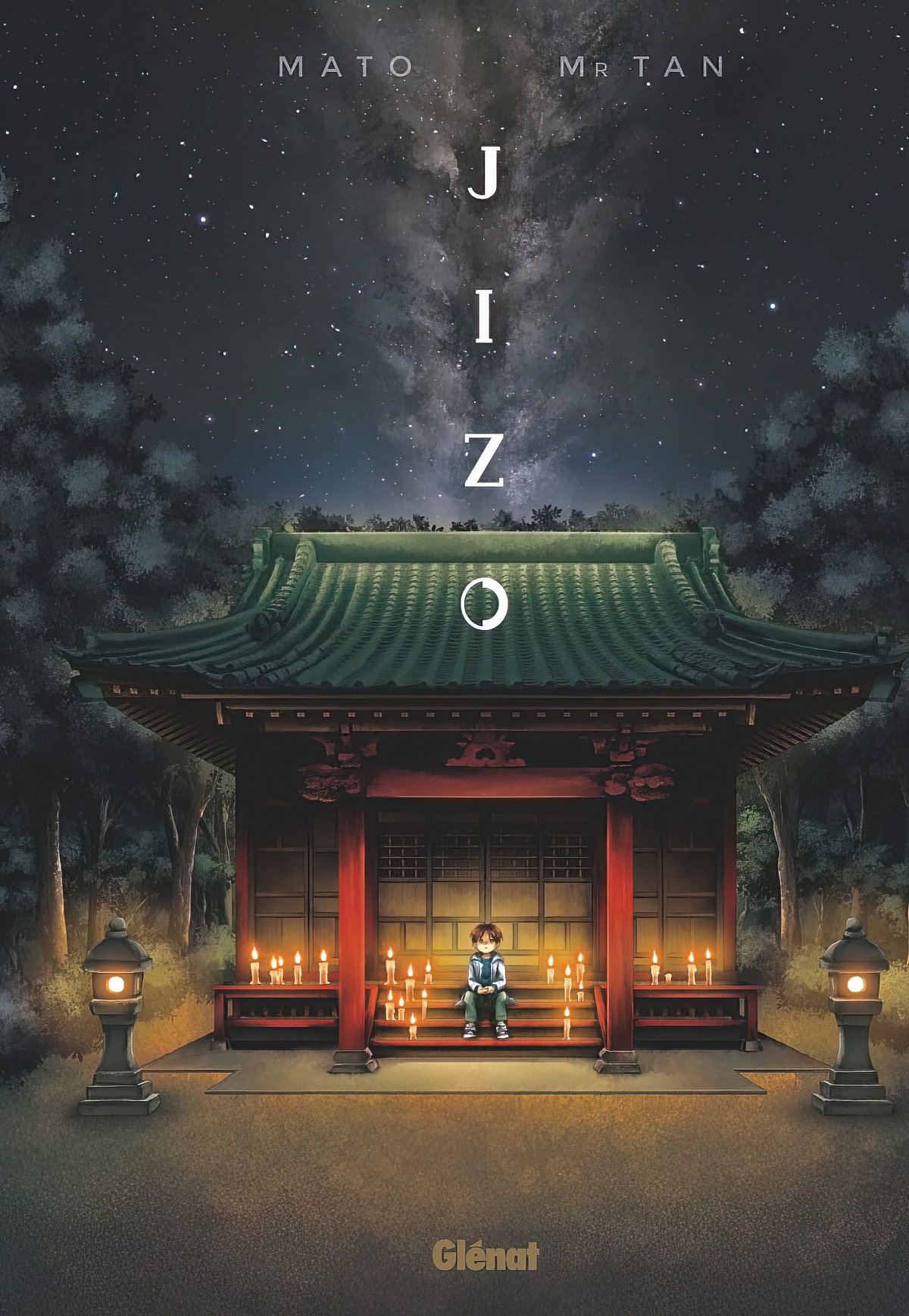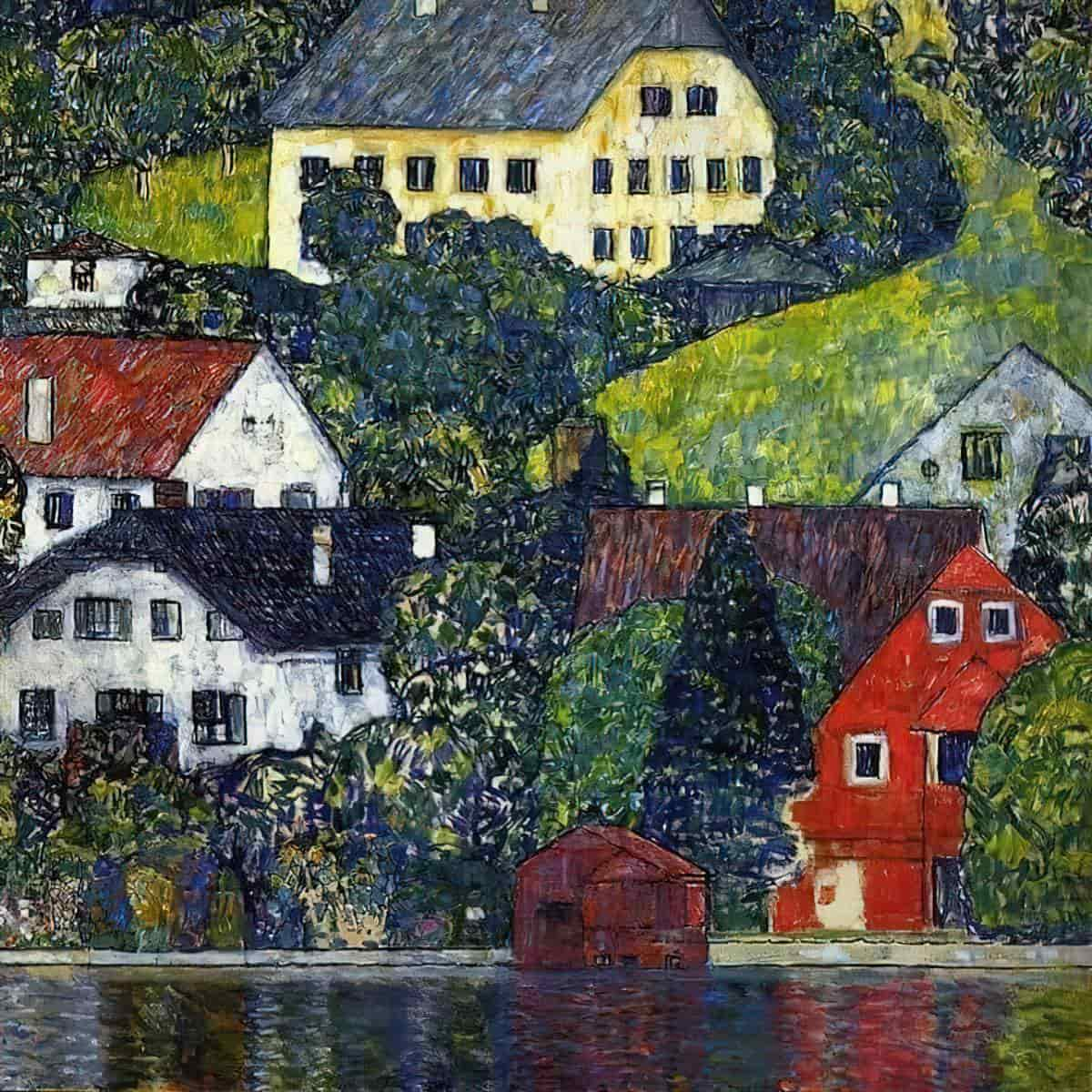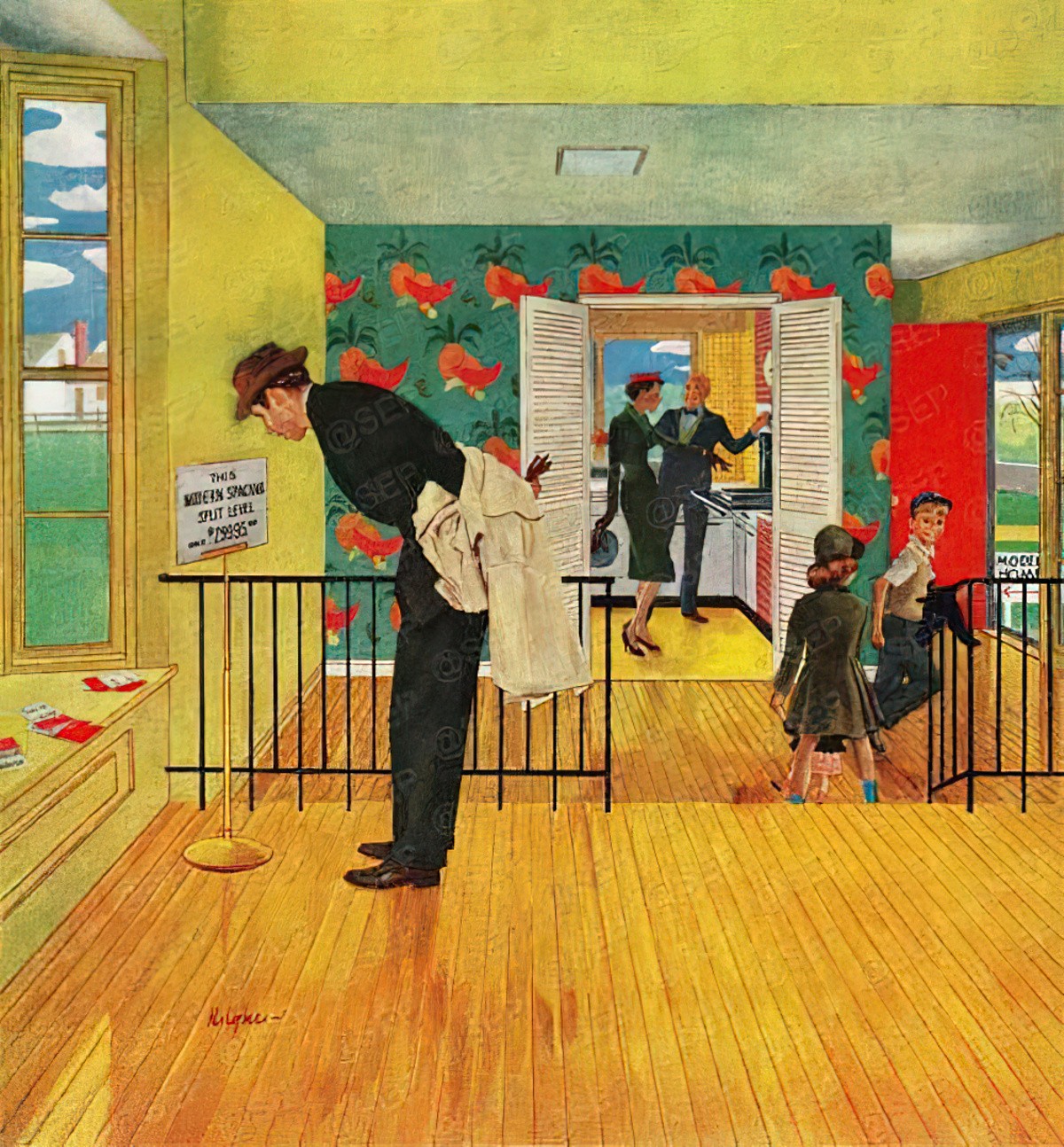The one point perspective house is commonly when children draw when they first start drawing houses. Here’s an example from my own kid. I think they were about 8 years old when they drew this one.
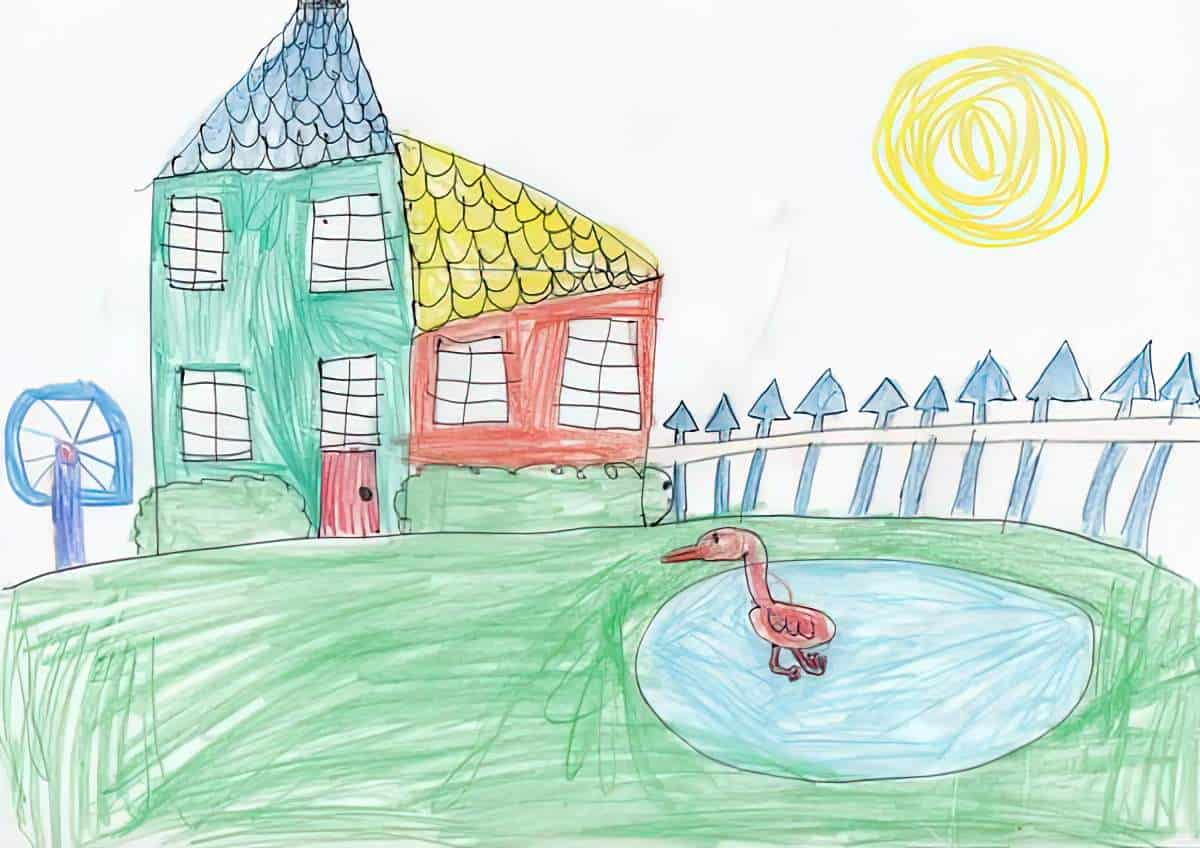
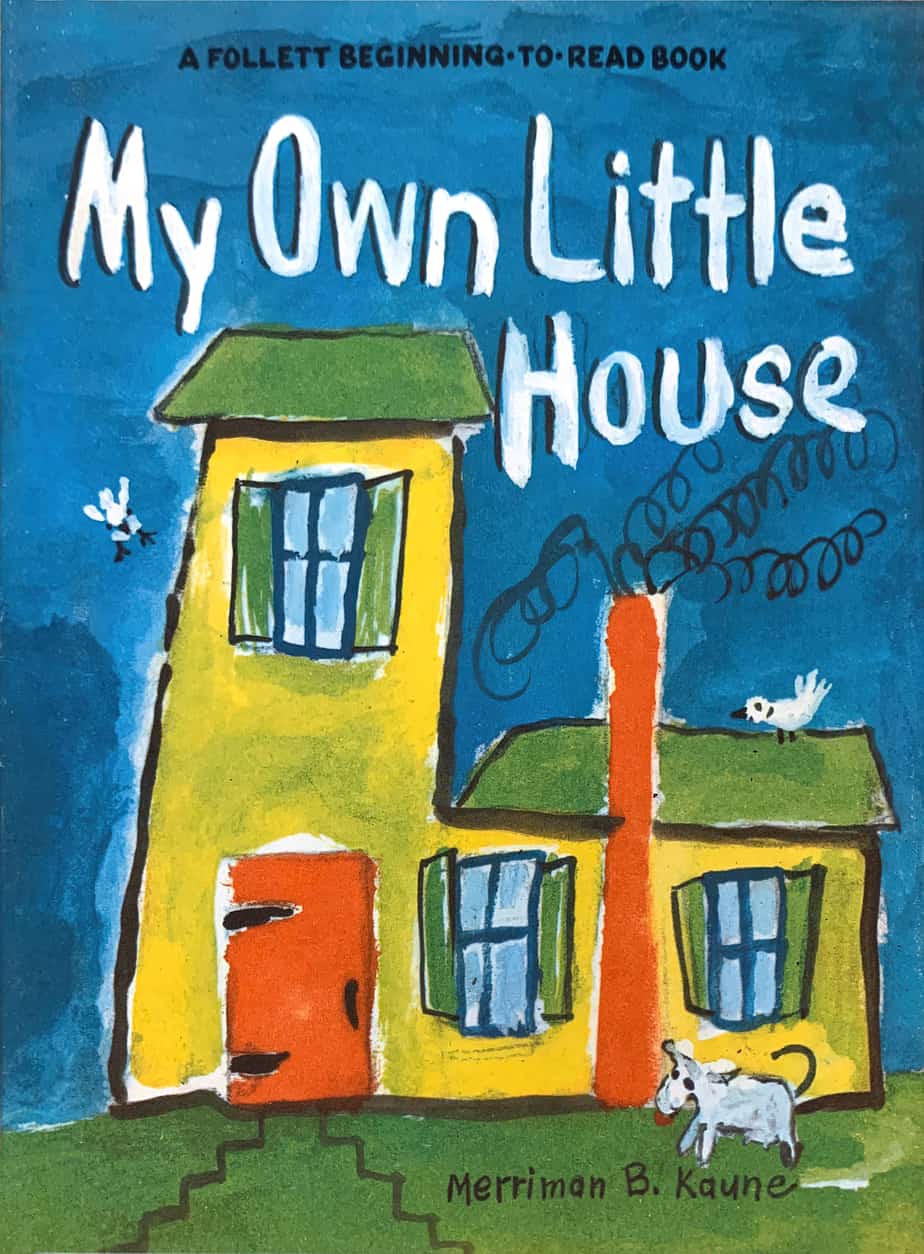
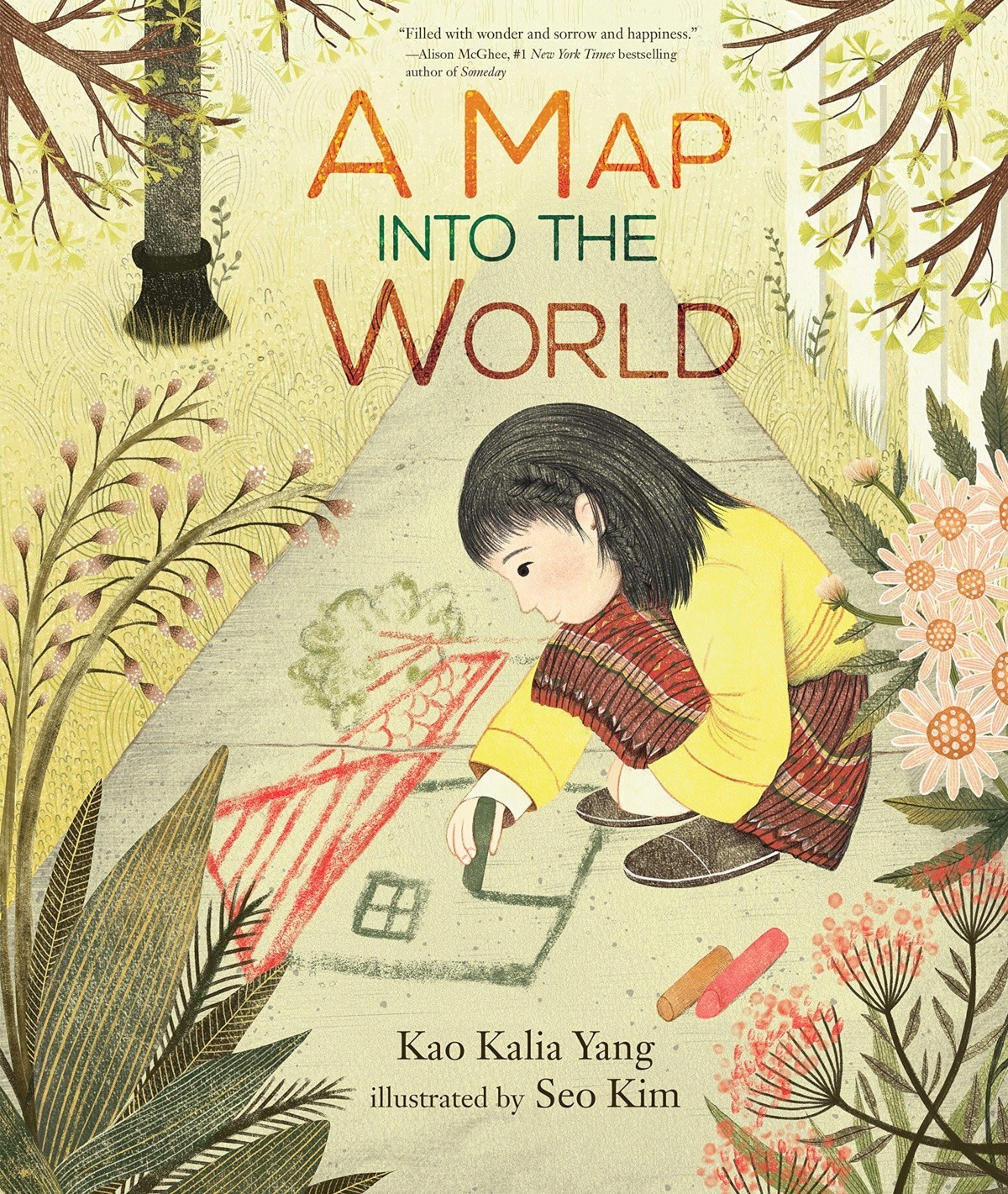
Another reason this perspective can look childlike: The doll house effect.
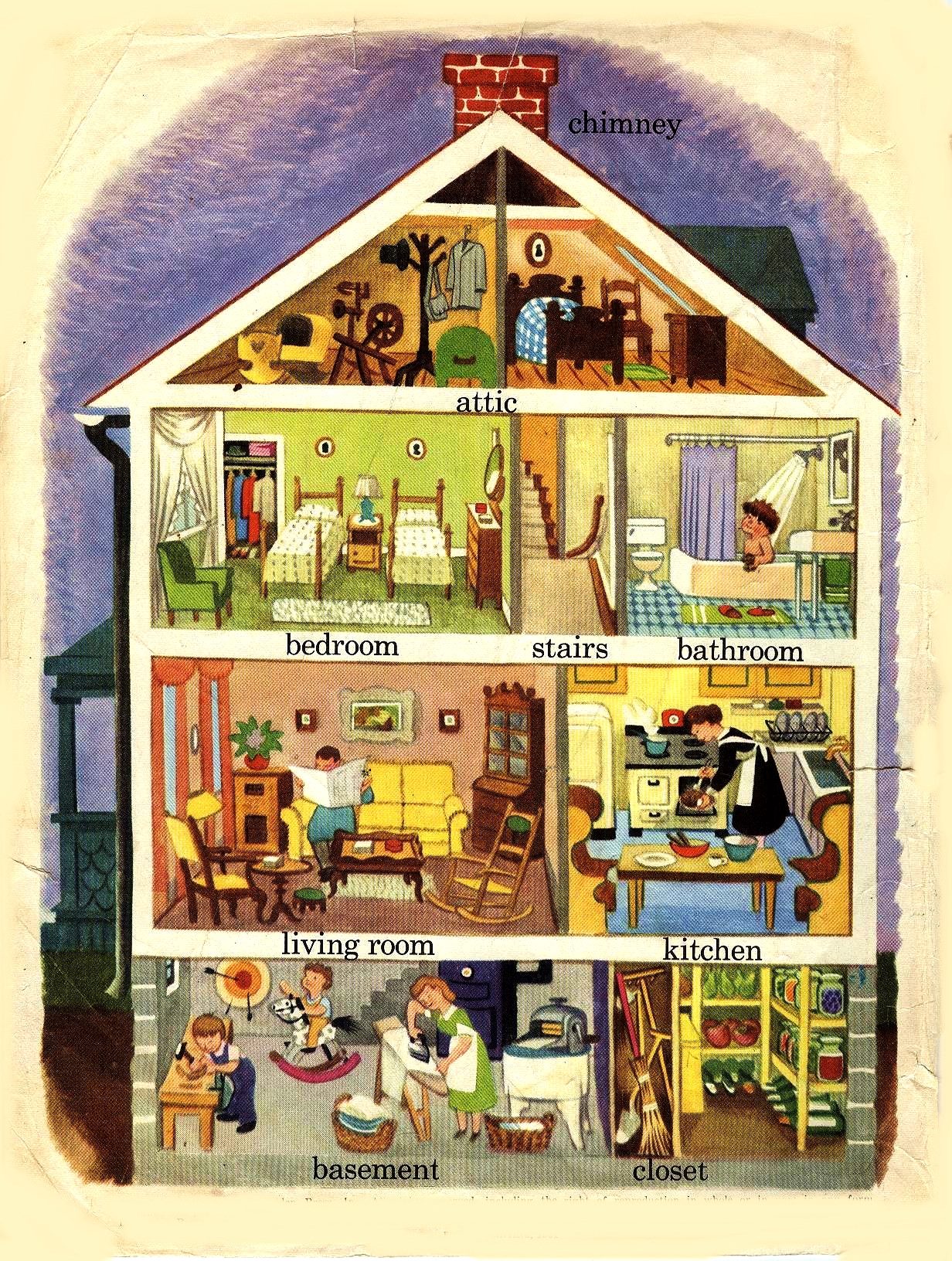
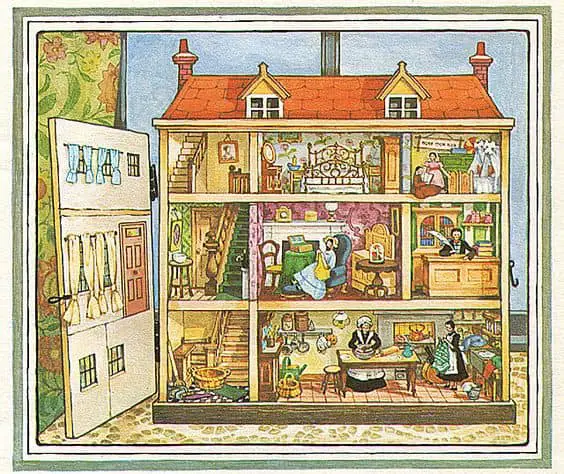
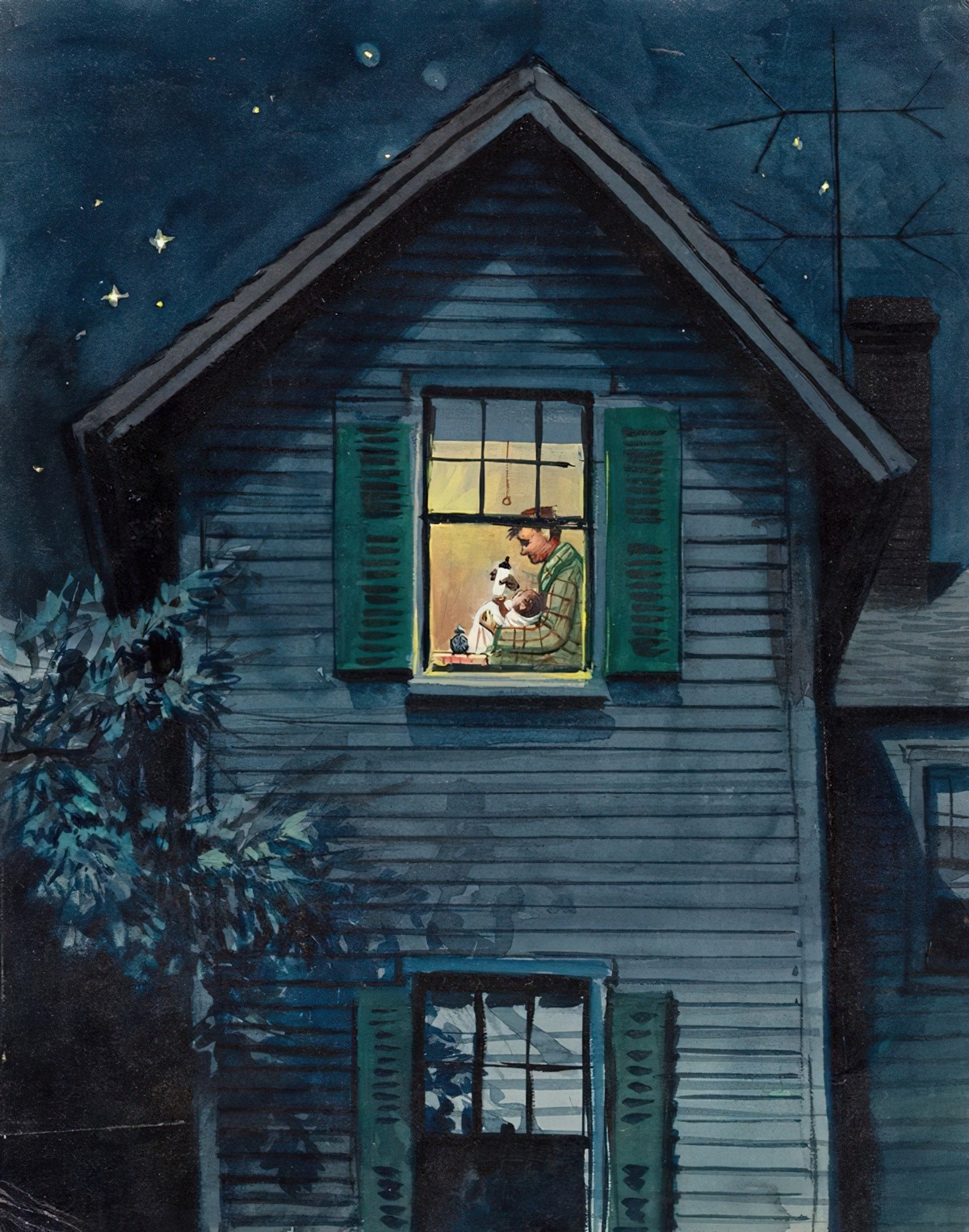
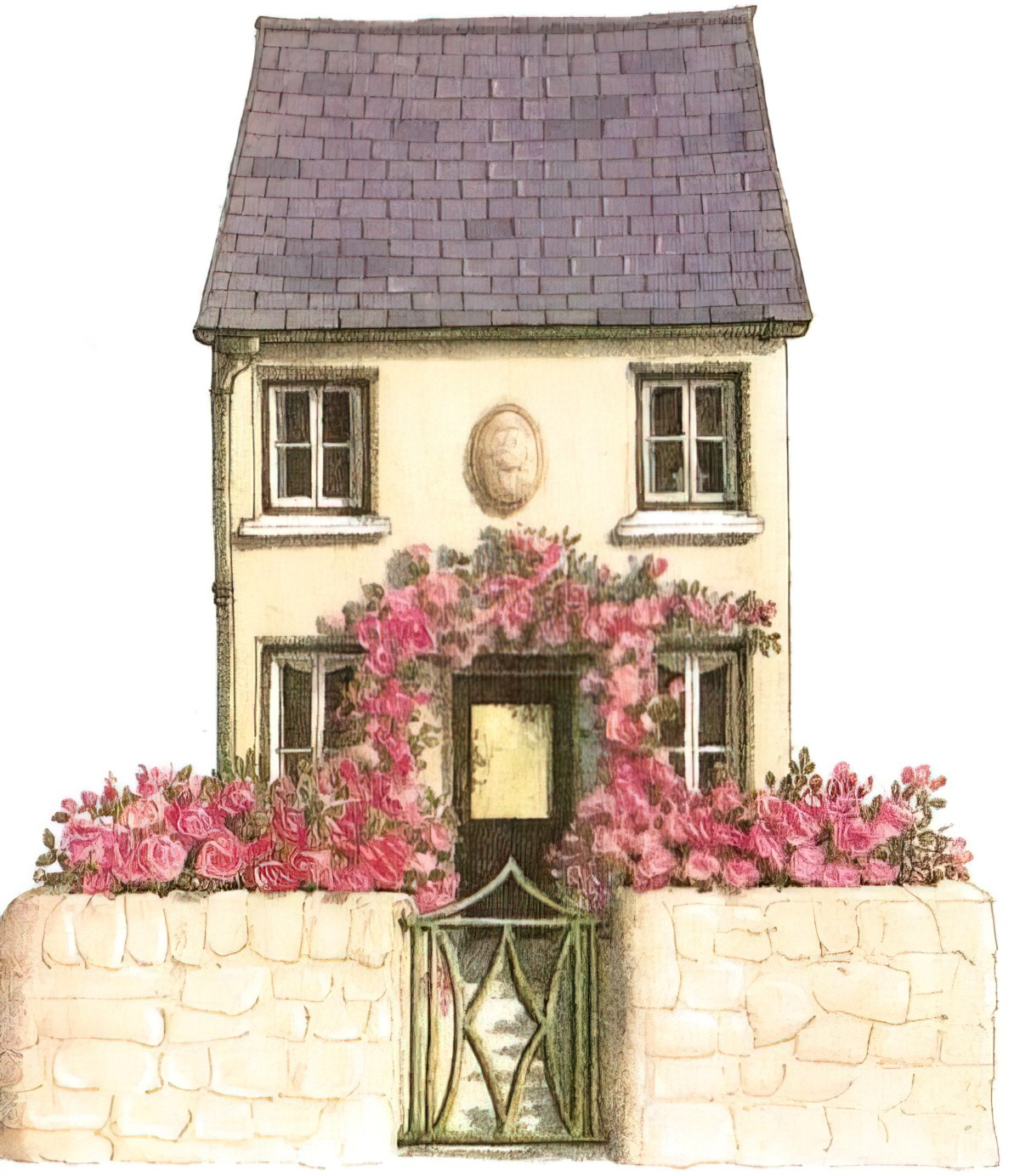
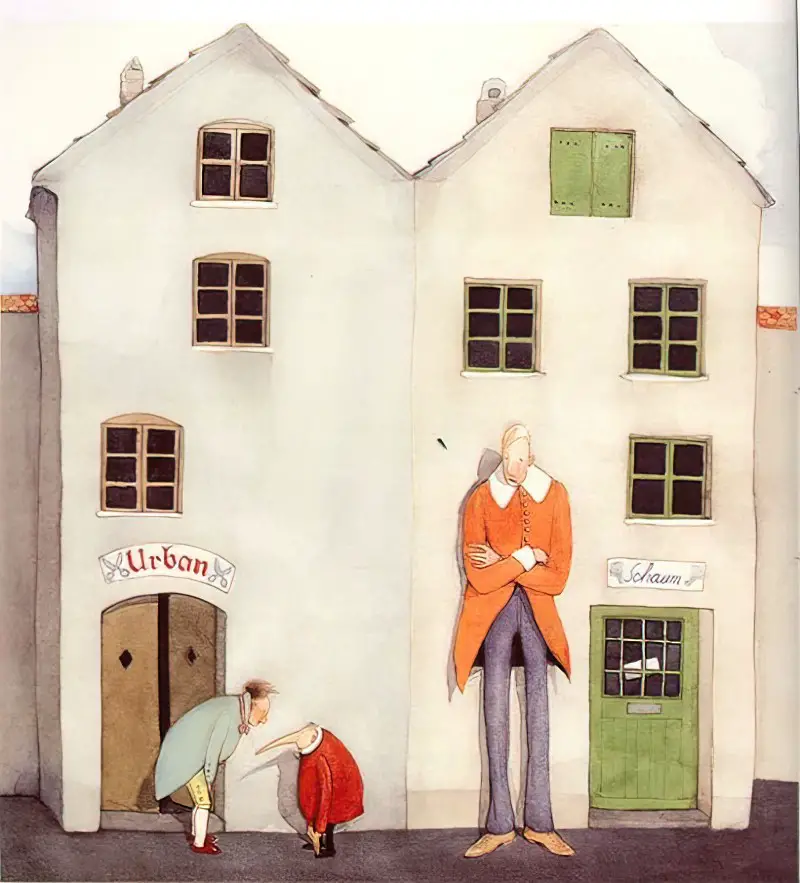
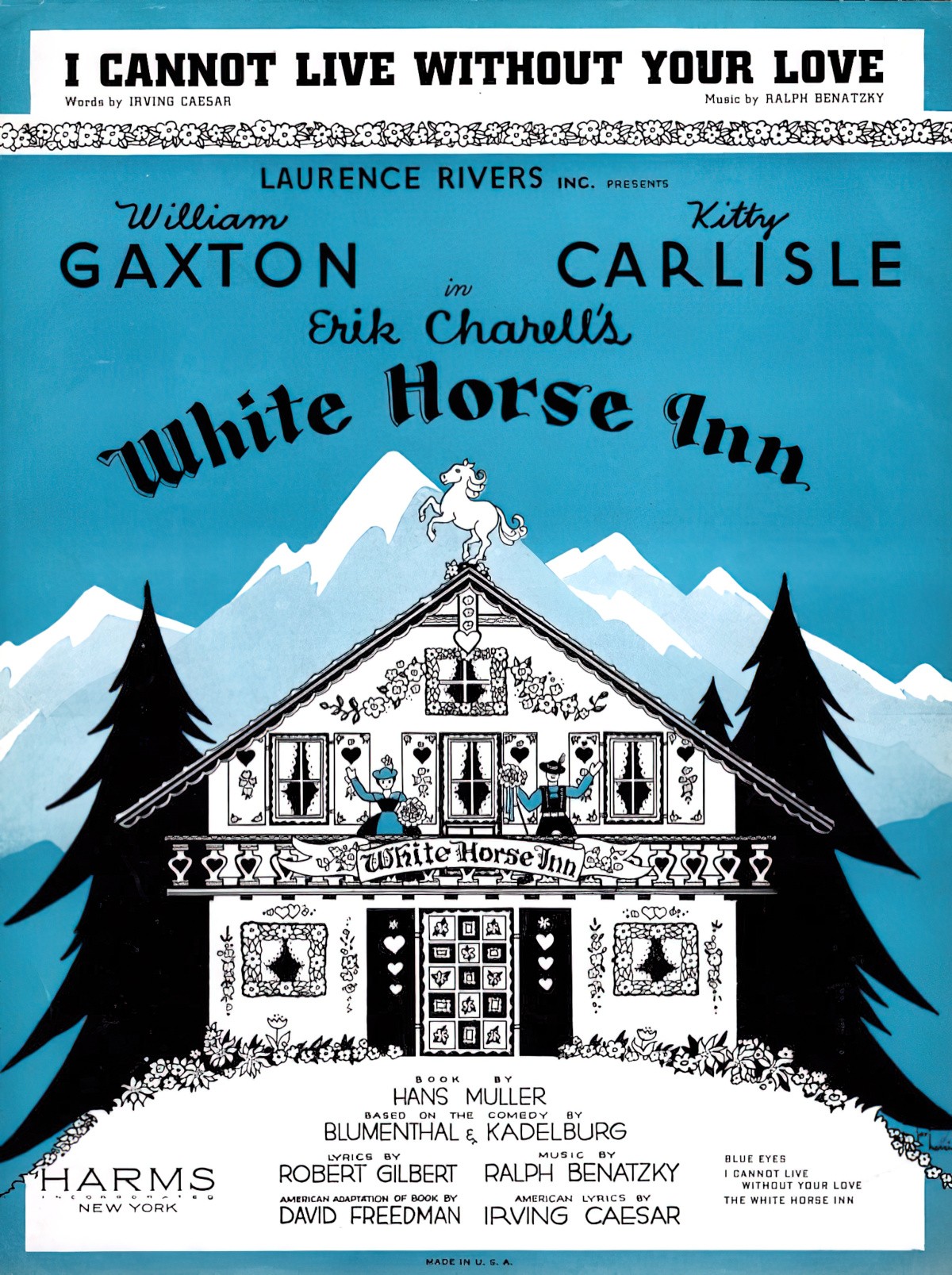
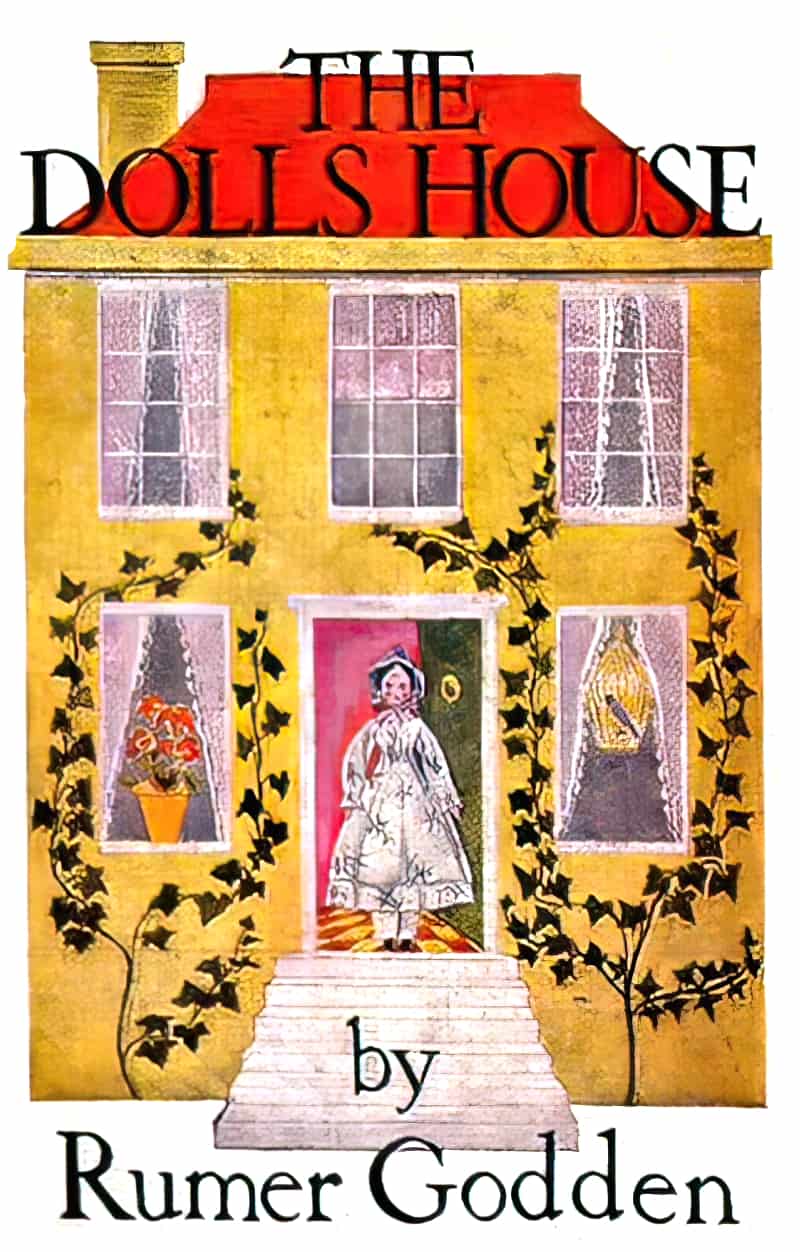
For more cutaway illustrations see this post. They were very popular in the 20th century and I have a theory as to why they’re not quite so frequently seen now.
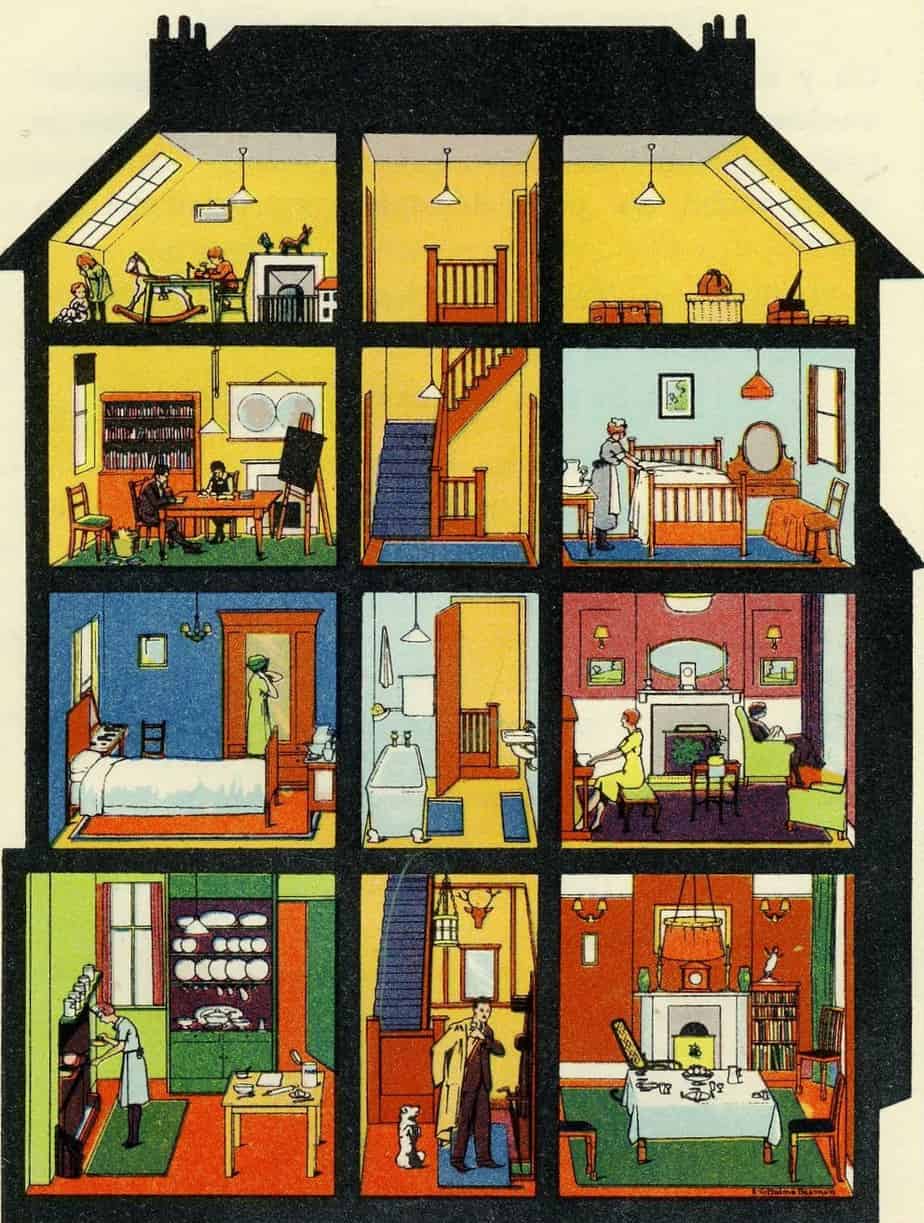
The pop-up books of my childhood are also generally one point perspective illustrations despite being literally three dimensional.
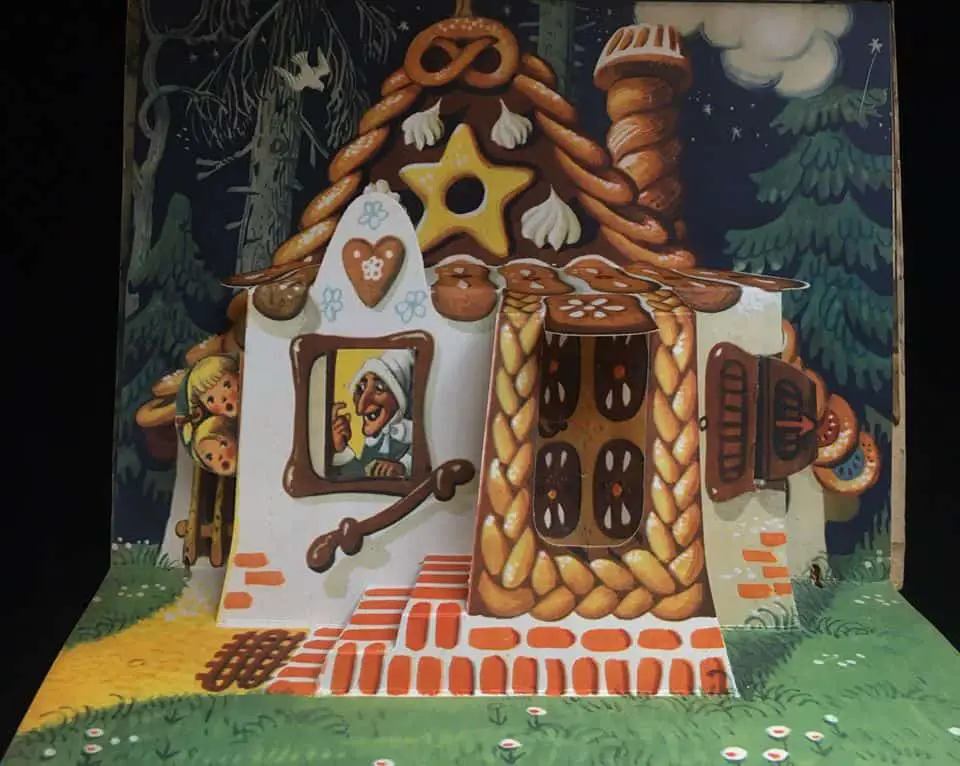
When illustrators create pictures aimed at children, they frequently aim to produce something young readers can recreate for themselves, or at least try to. Roger Duvoisin was an expert at creating beautifully naïve illustrations. The one point perspective house from The House of Four Seasons is the perfect example of a childlike depiction of a house.
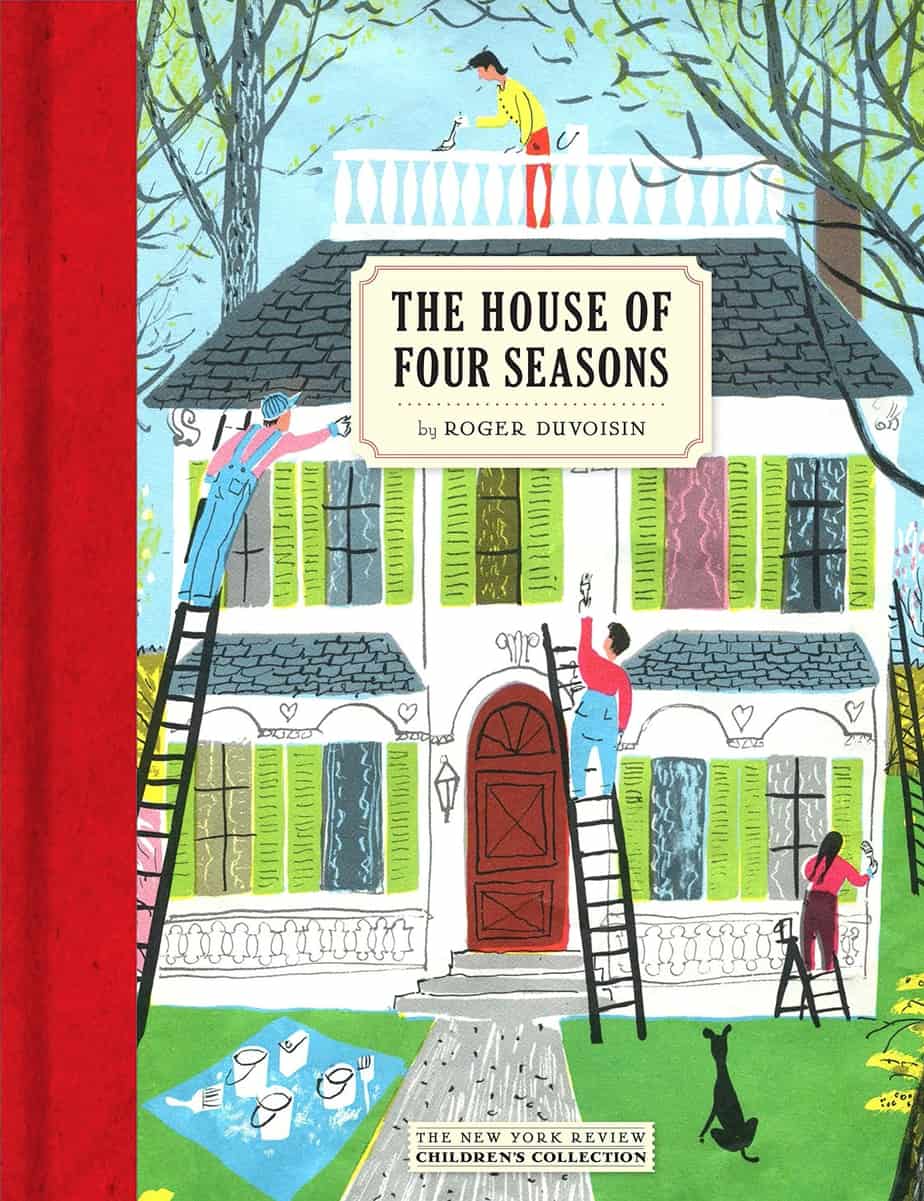
The one-point perspective house is also, most frequently, the Dream House as described by Gaston Bachelard in his book The Poetics of Space.
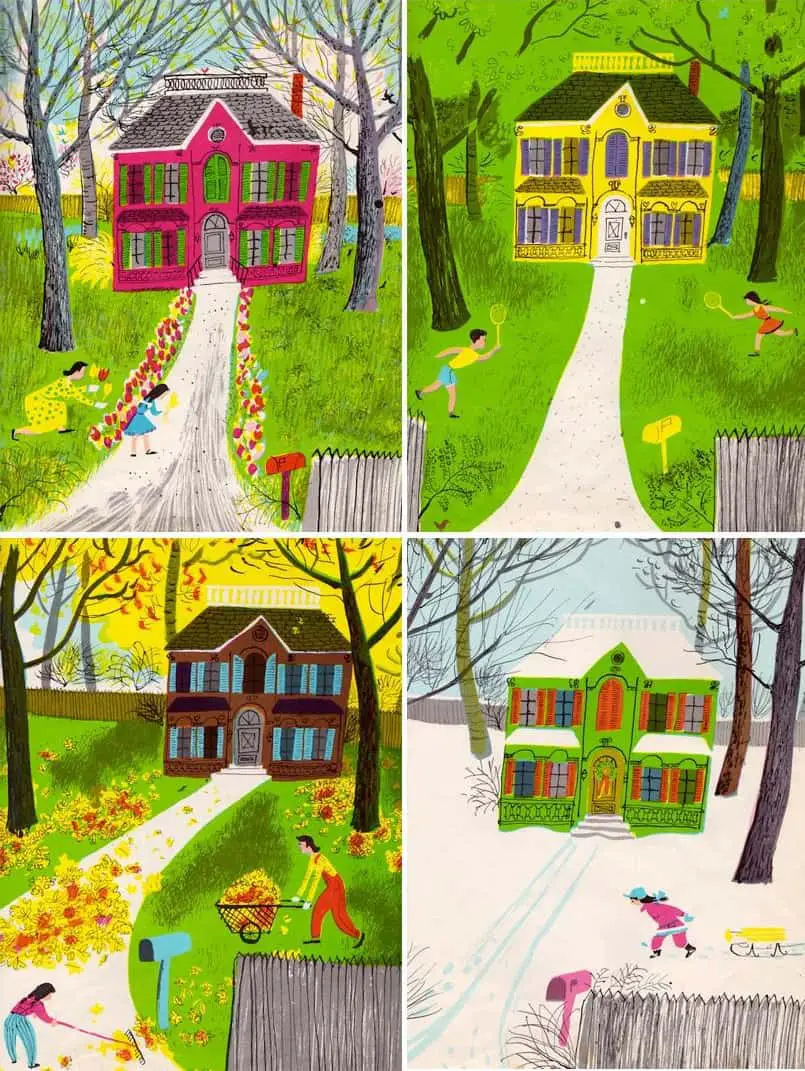
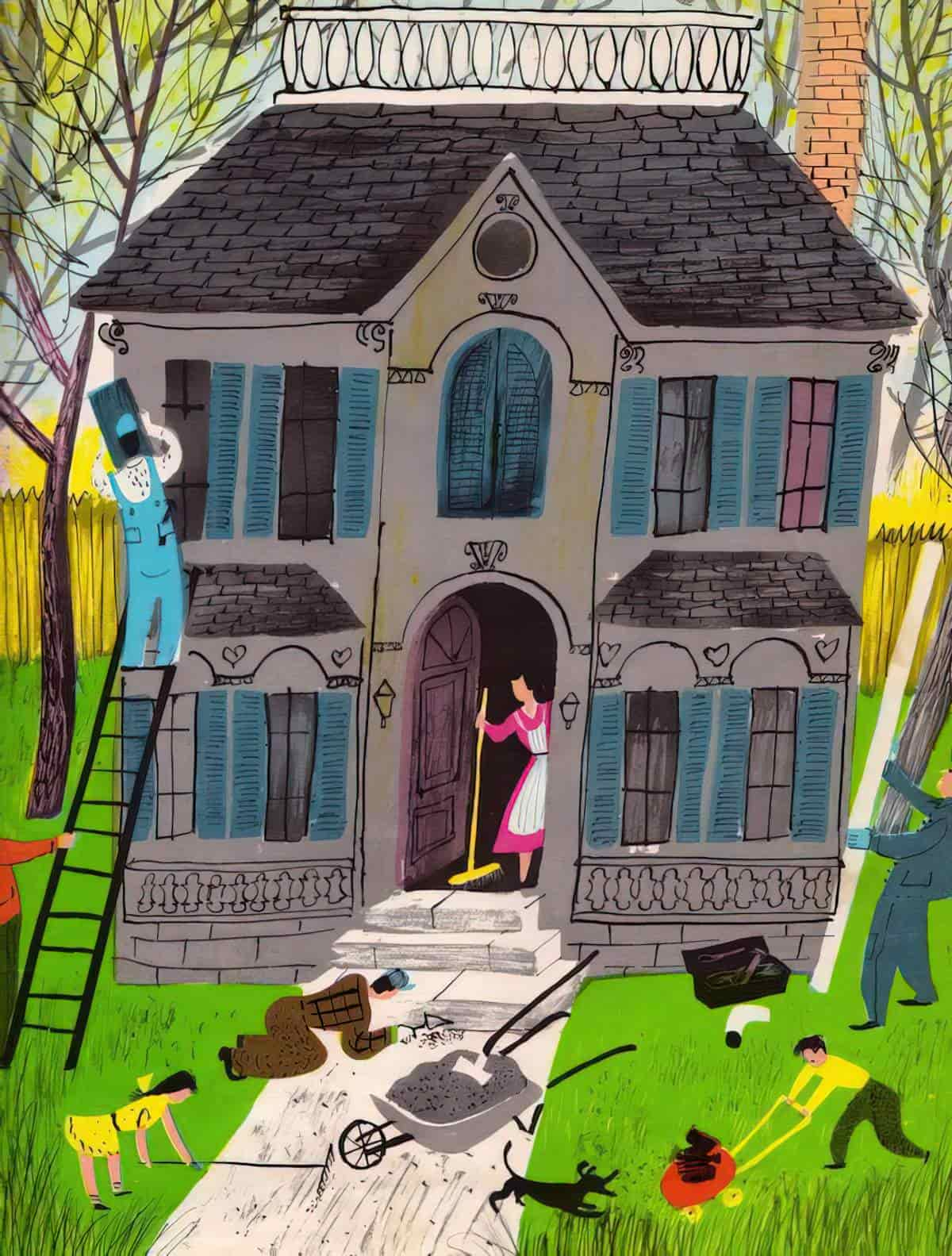
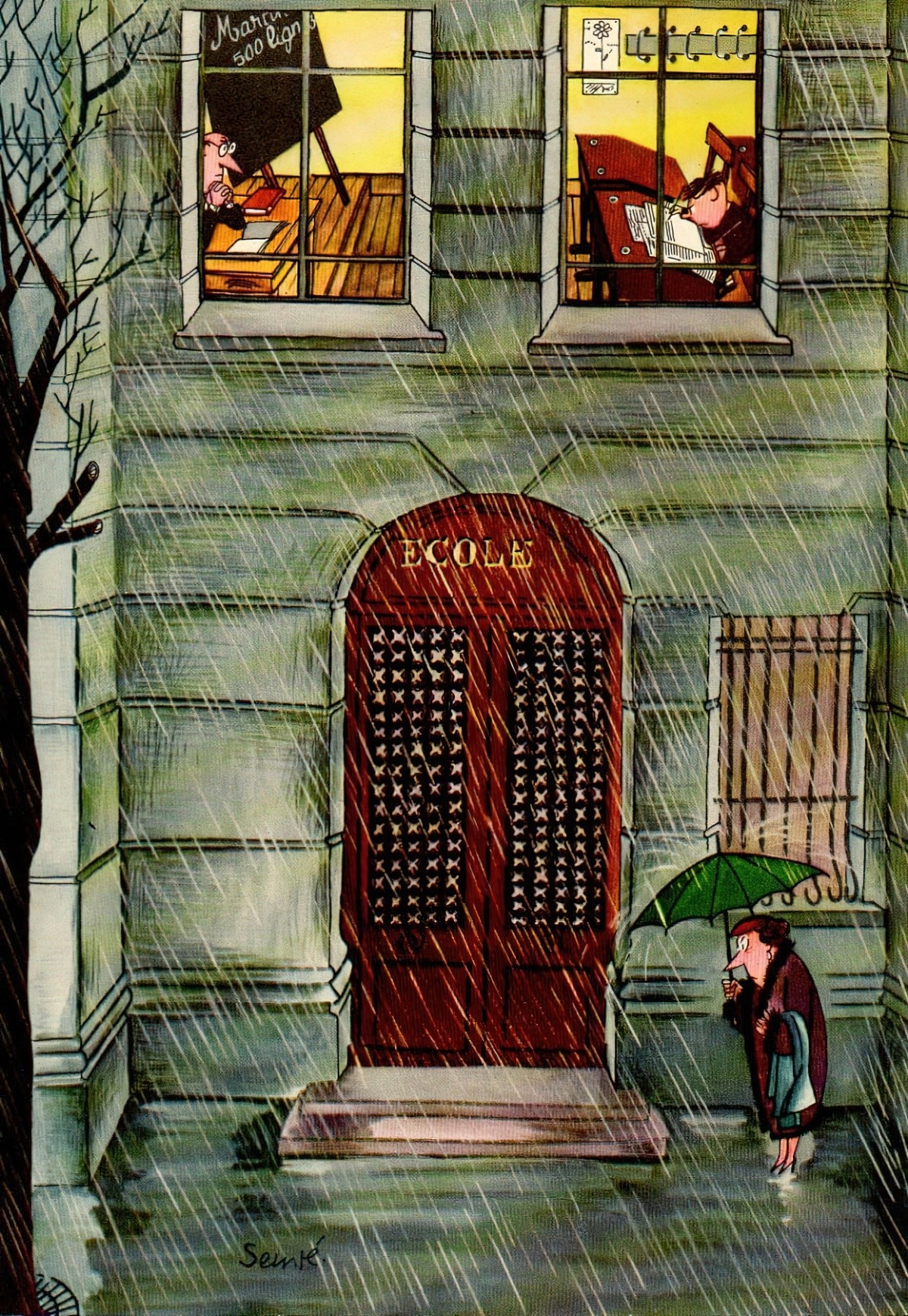
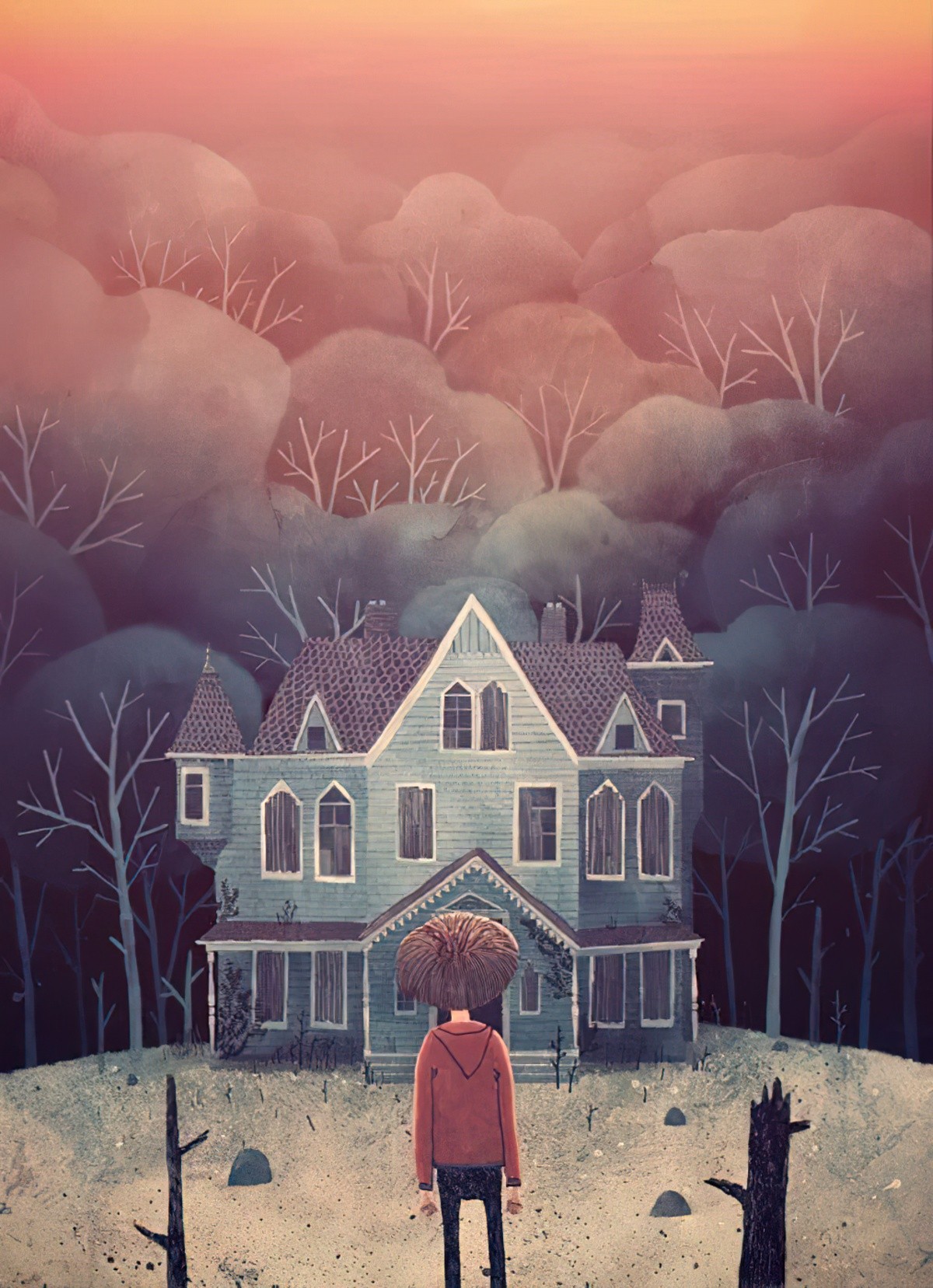
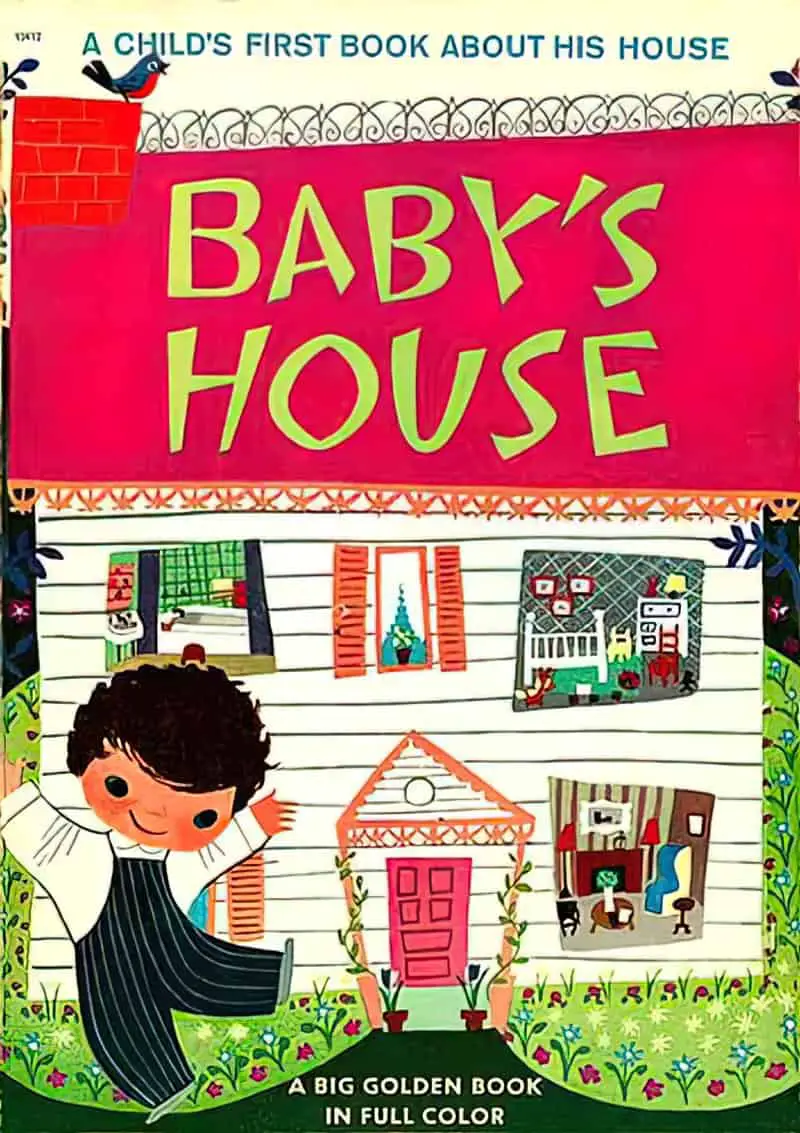
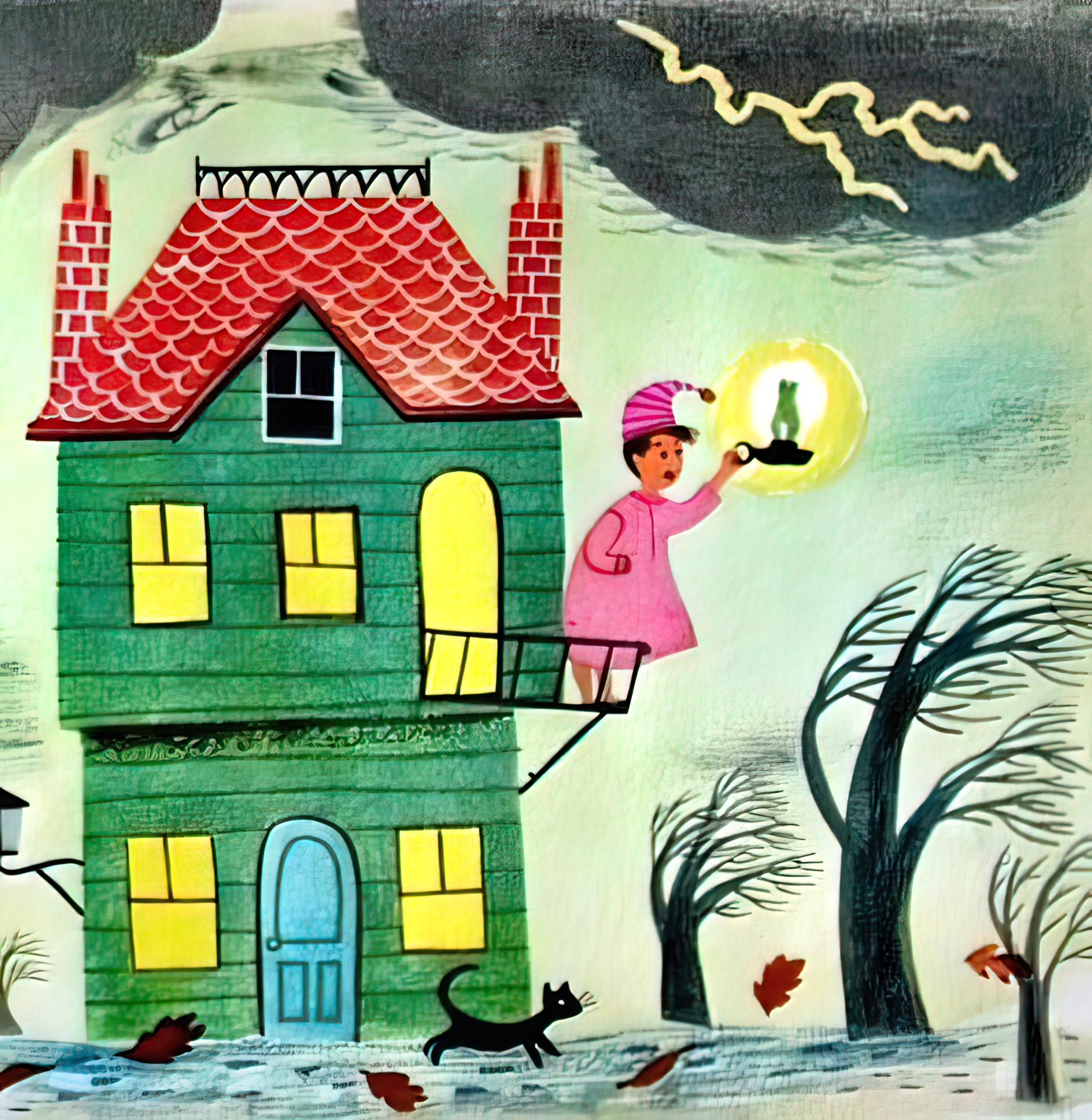
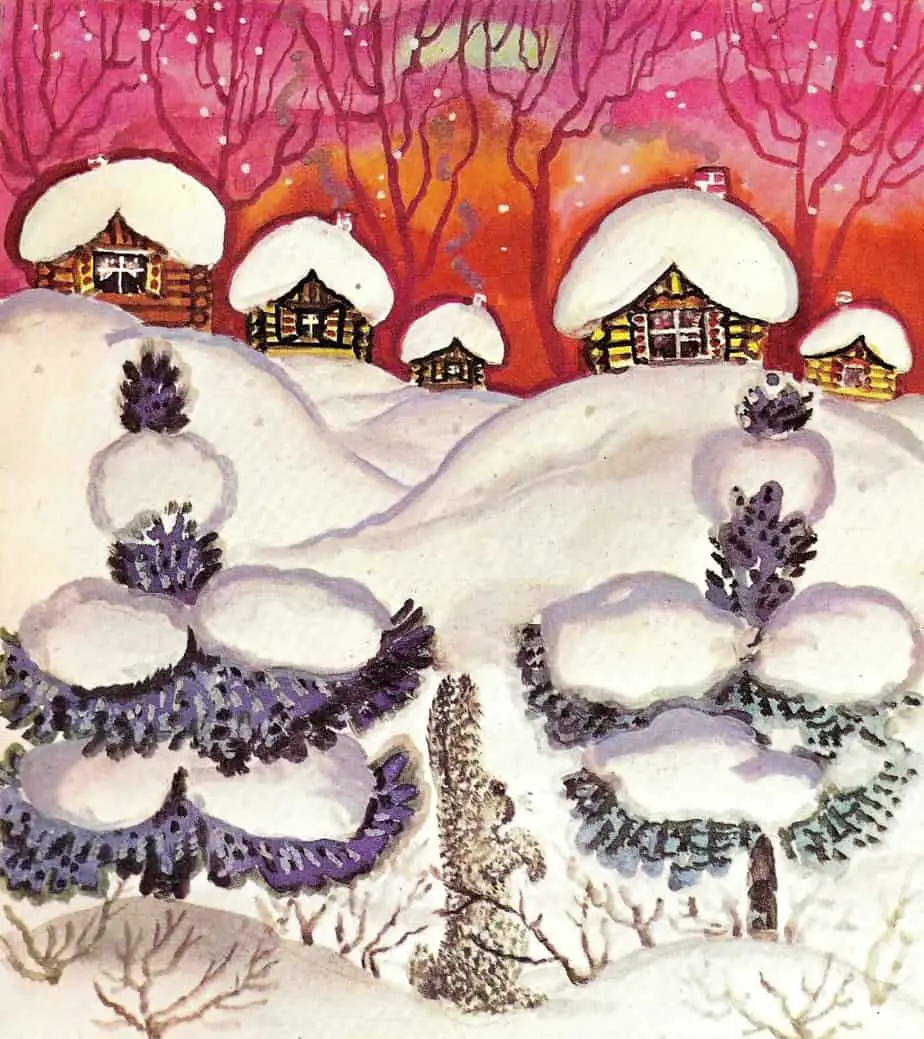
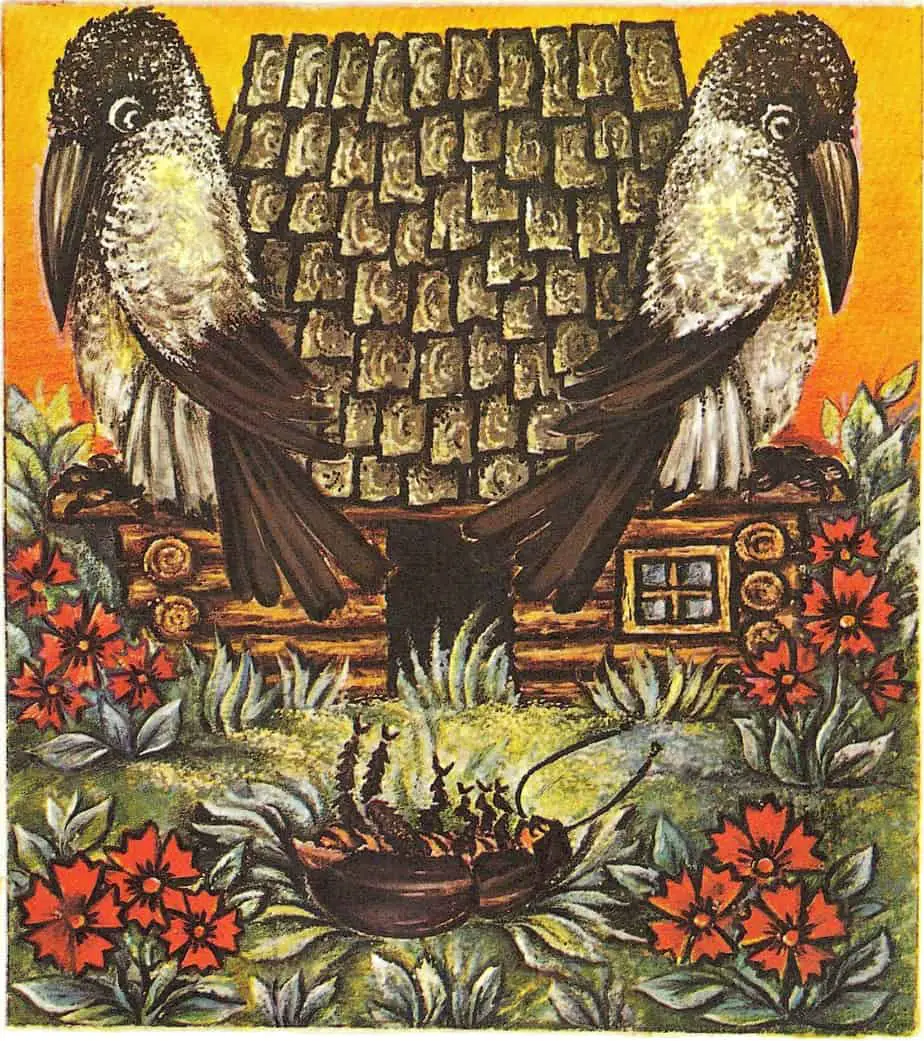
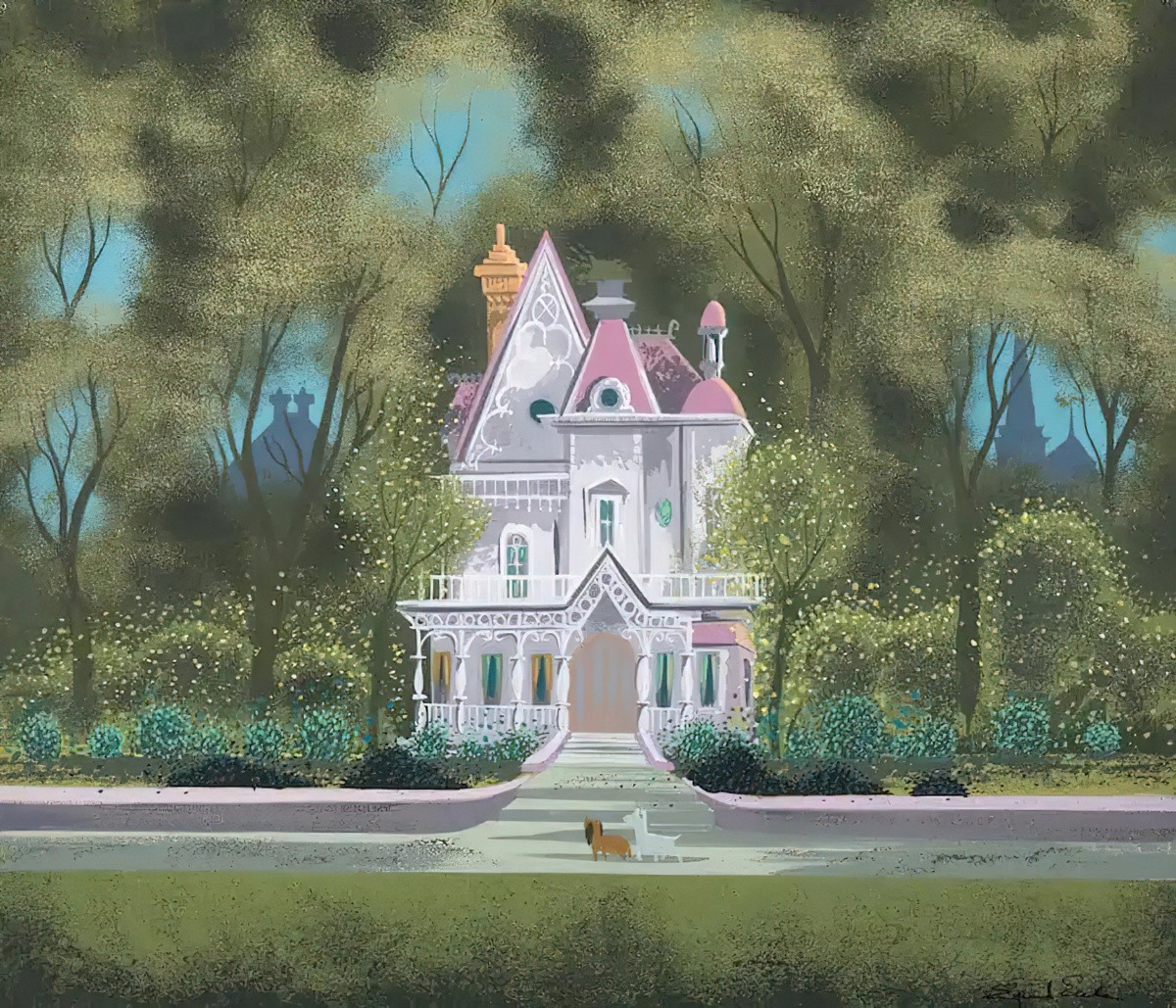
Roger Duvoisin’s example is peak hygge, but one point perspective compositions are not necessarily benign. The example below promises excitement. The large area of sky helps with that (combined with the colour purple, which often foreshadows magic).
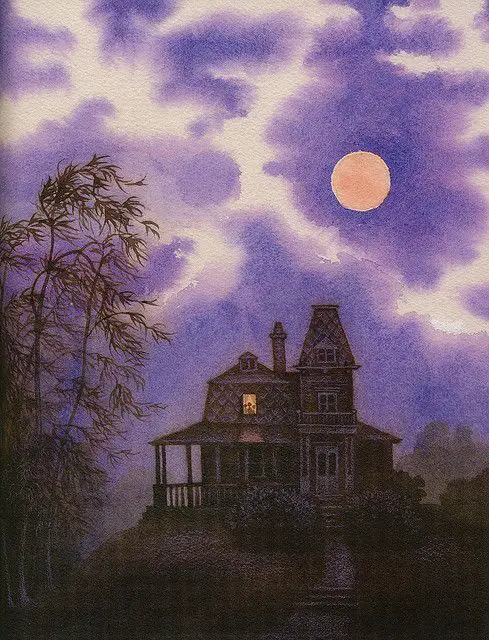
This contemporary children’s book achieves a similar effect.
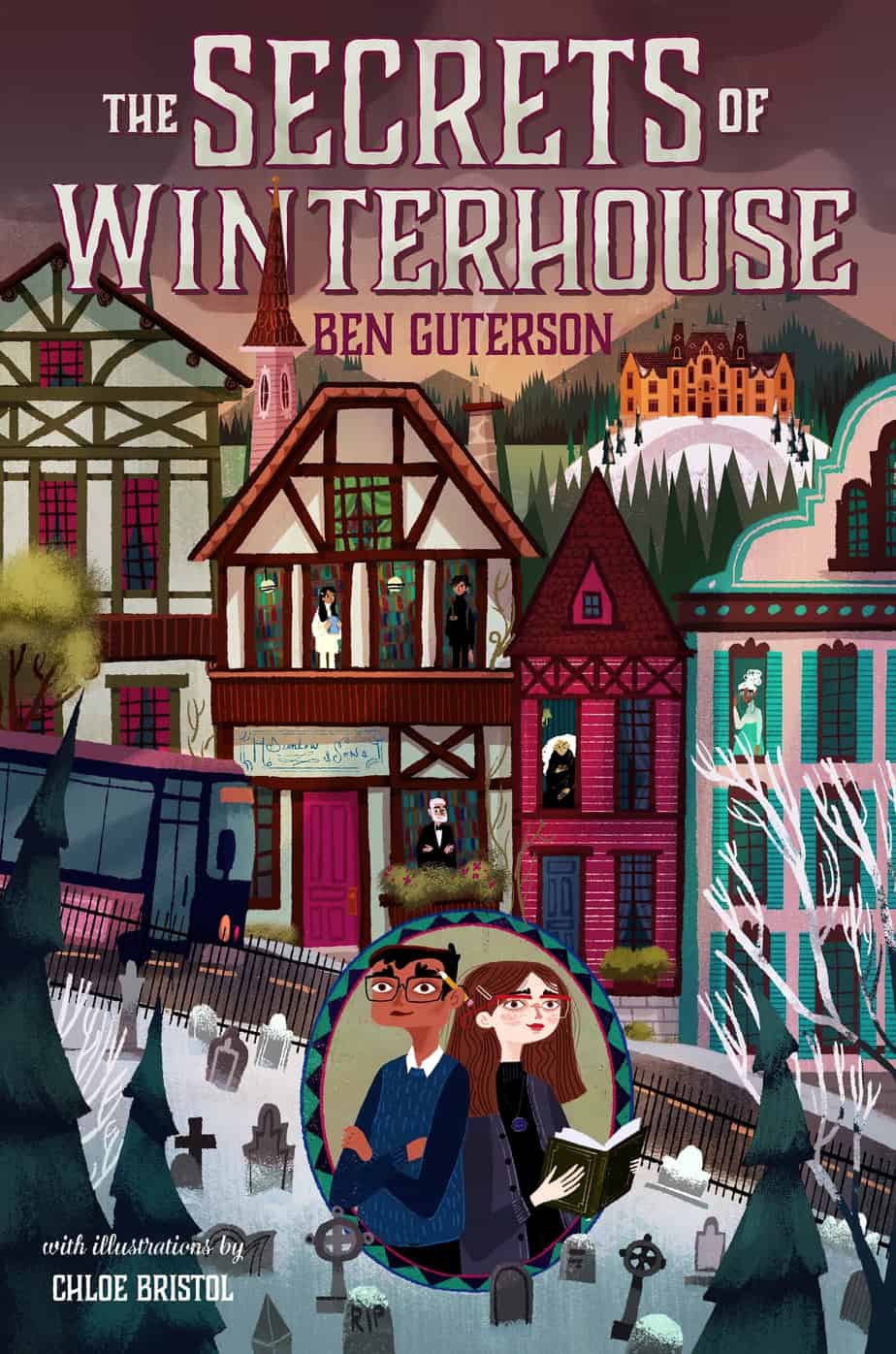
Black and white can do it, too. Here the camera has been lowered just a little. More eerily, the house has been elongated, turned into a giant of the night.
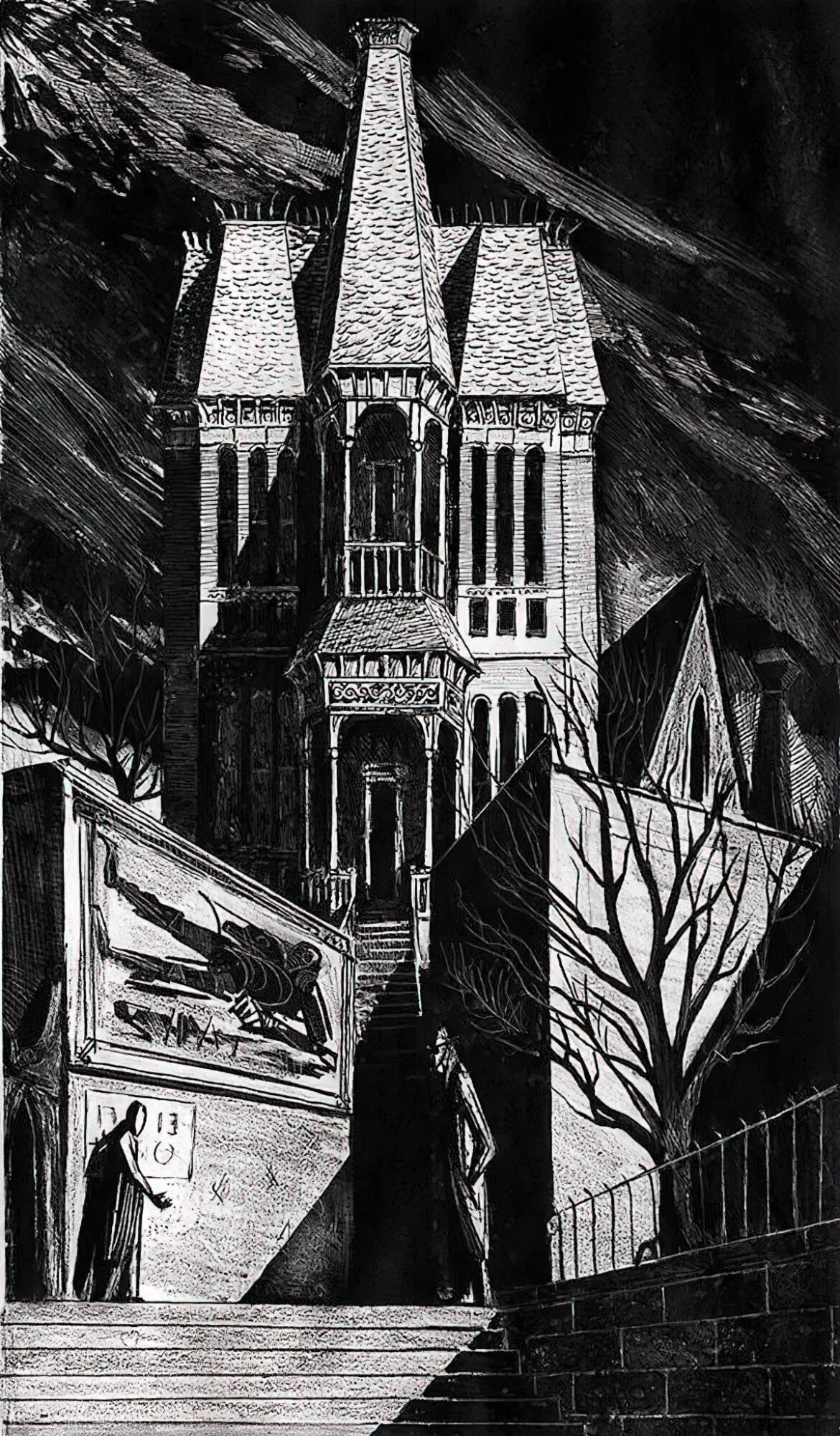
The following illustration is from a highly symbolic picture book, where the illustrator creates a dream scape. This is one of the less wacko pictures.
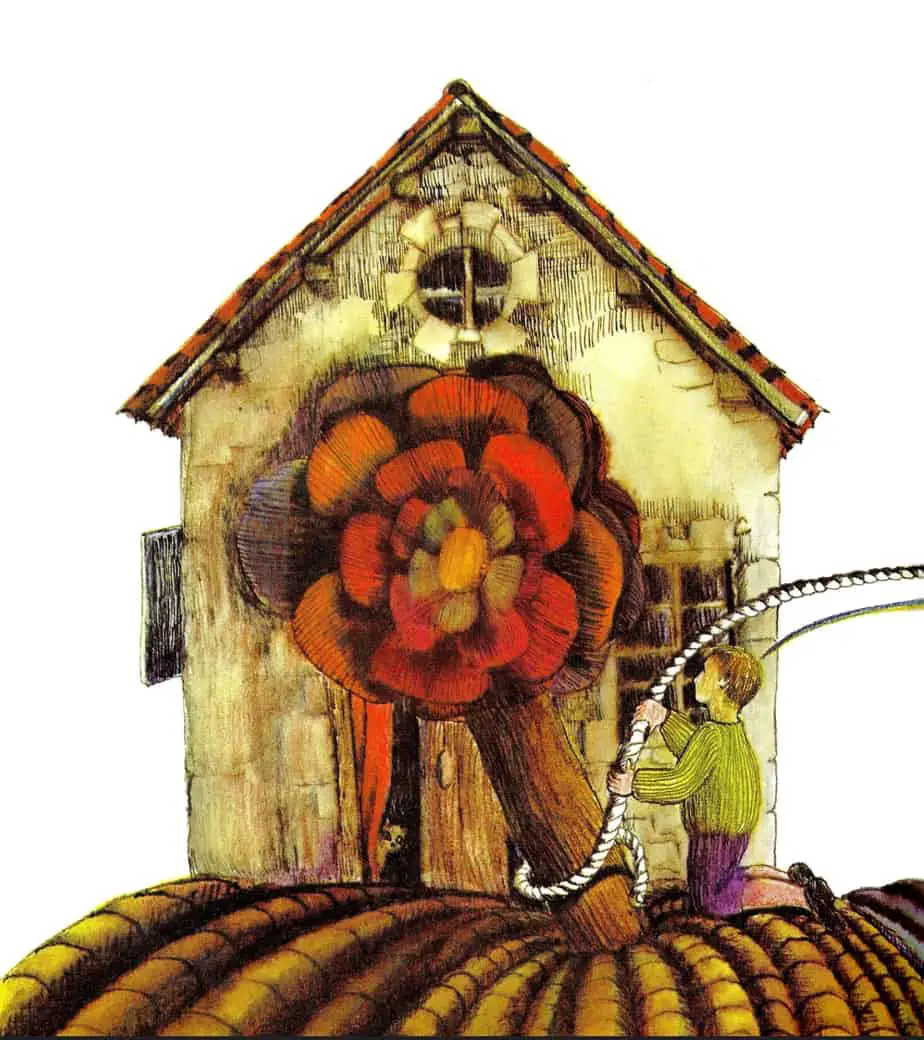
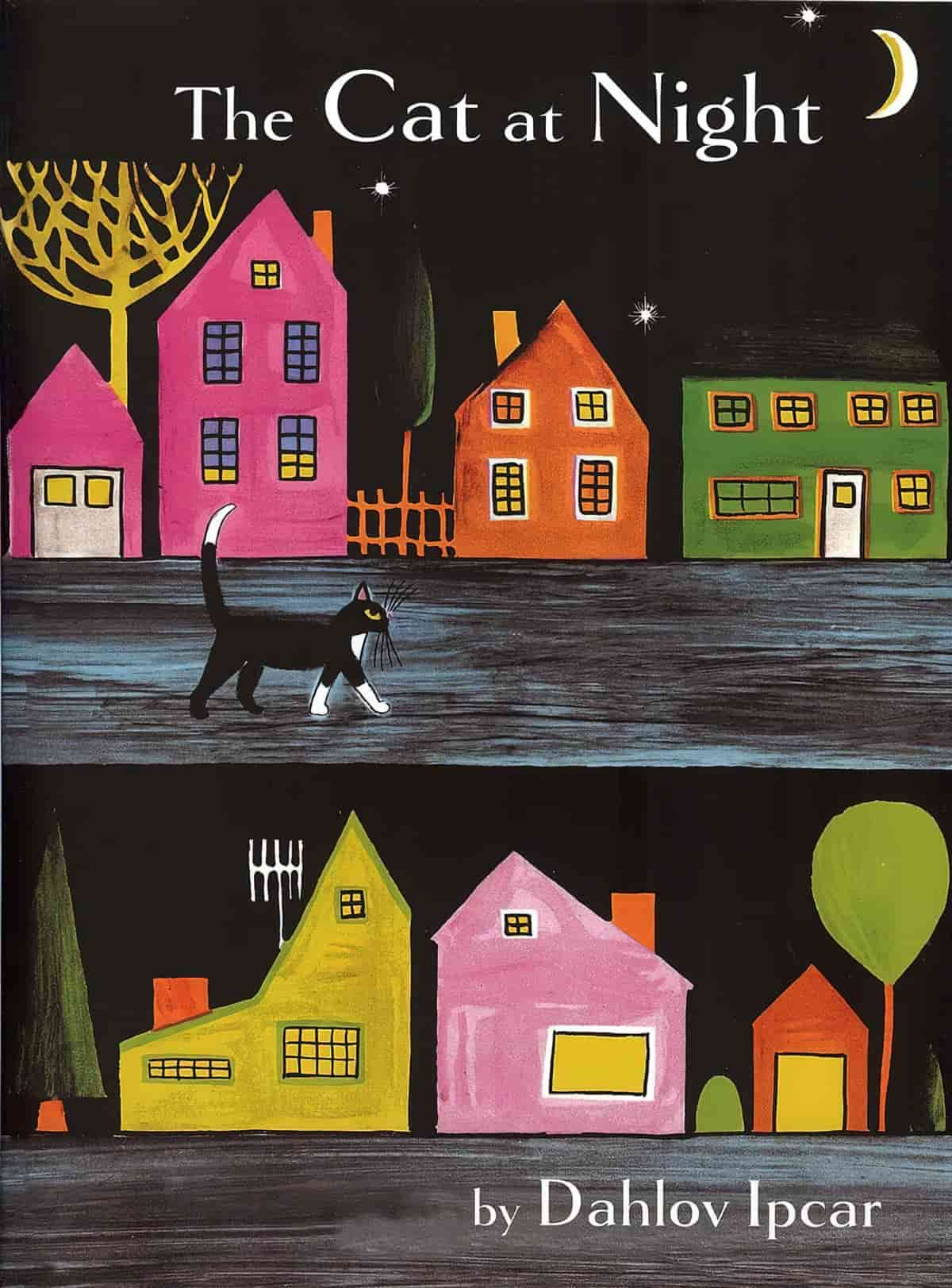
Note that the one point perspective rendition of a building isn’t limited to art aimed at children.
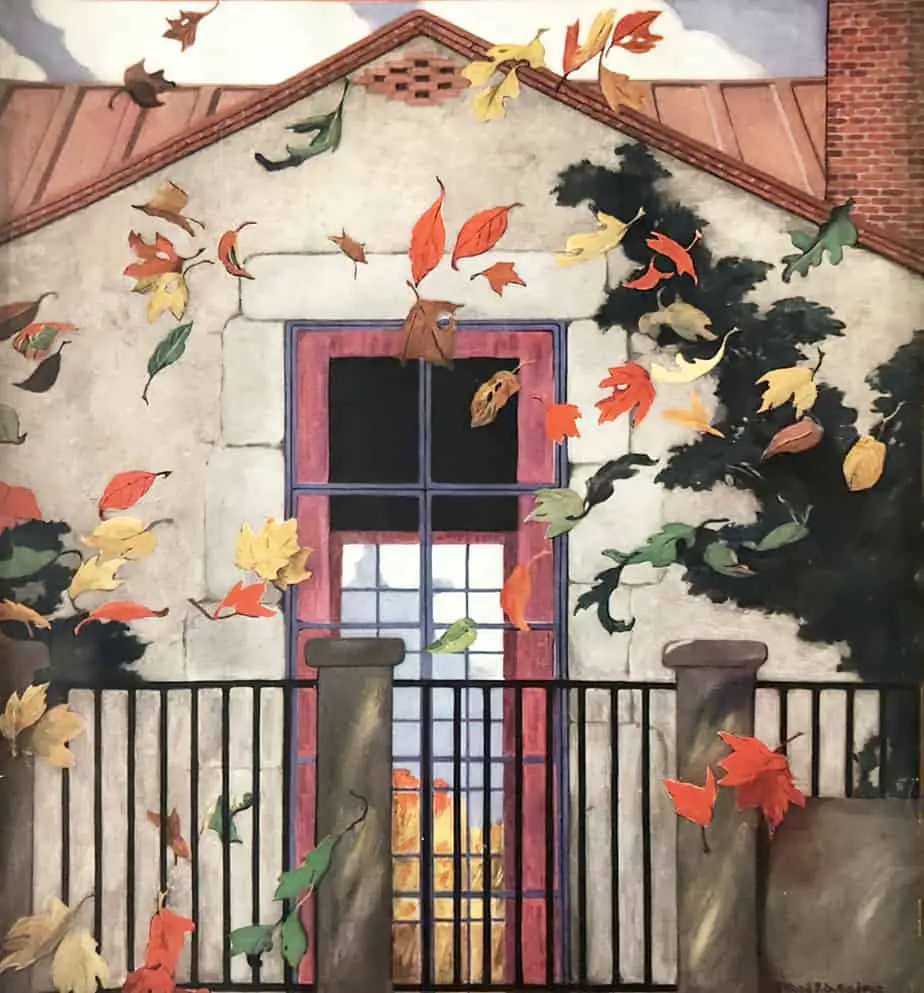
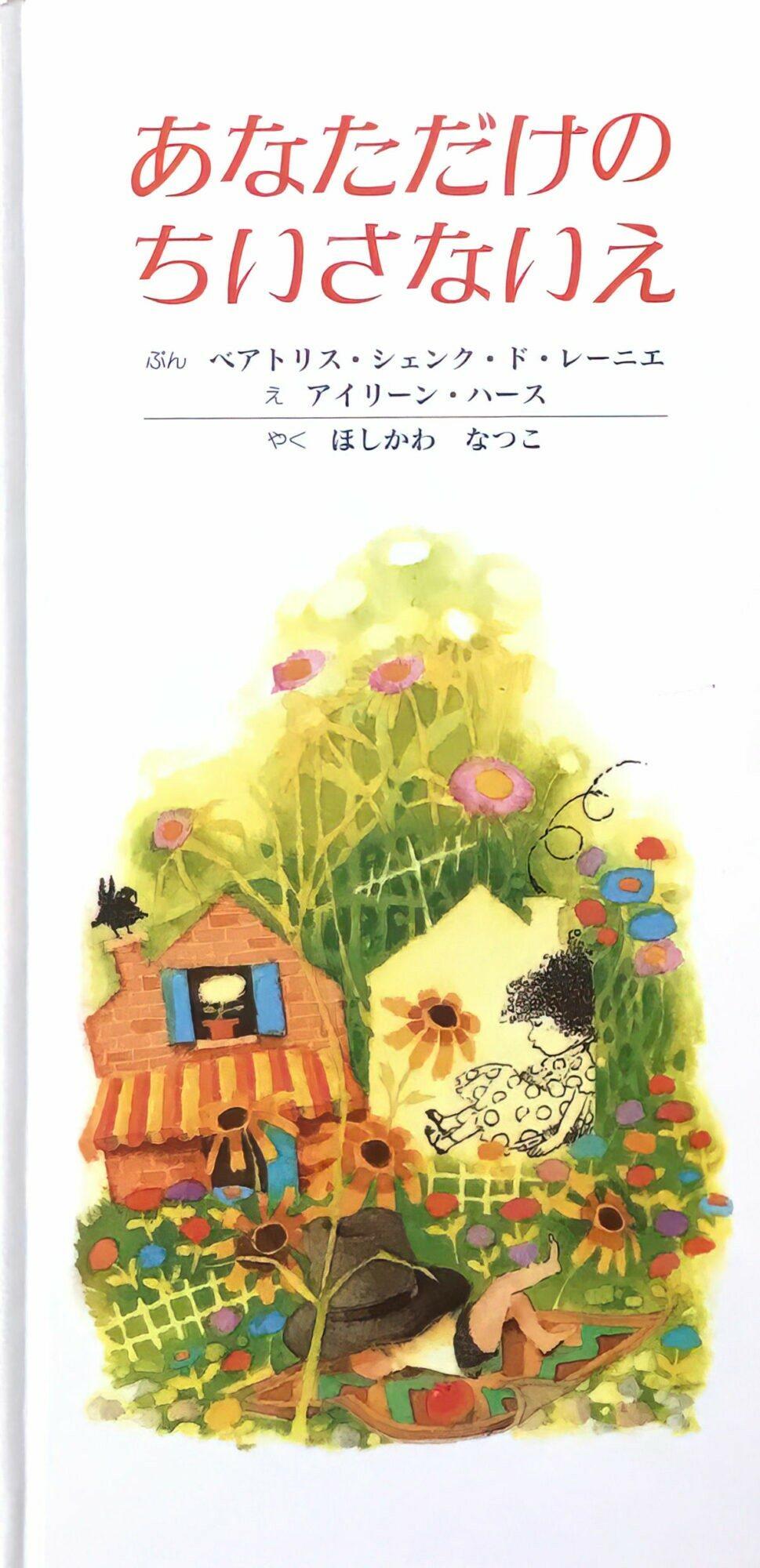
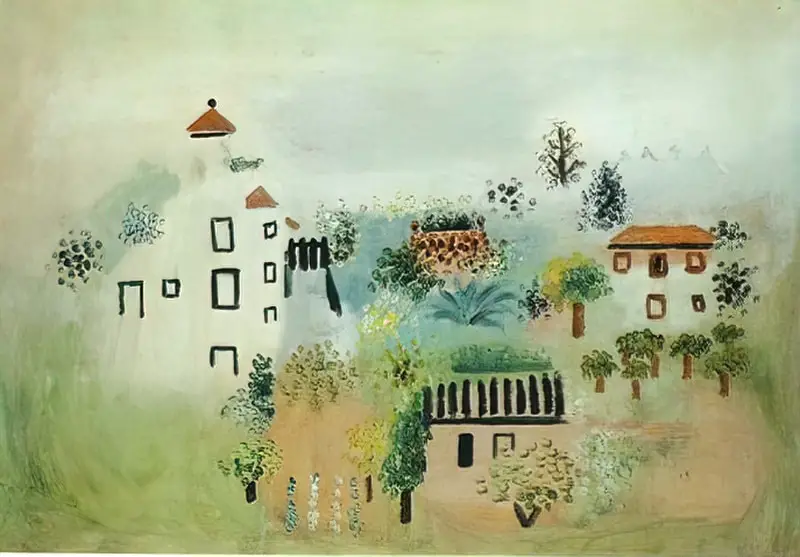
Here’s an example by Edward Bawden, though you could argue there’s a childlike quality to this one. The house itself feels flat, but the fence is 3D.
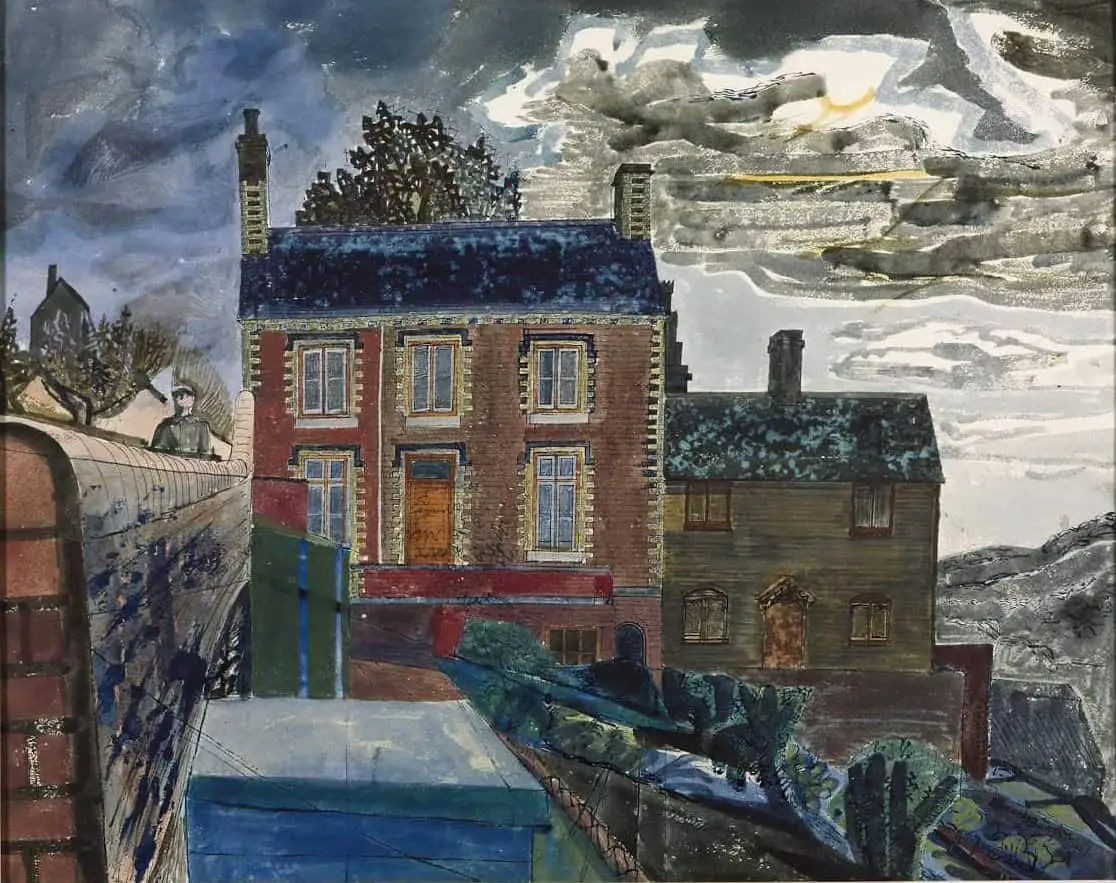
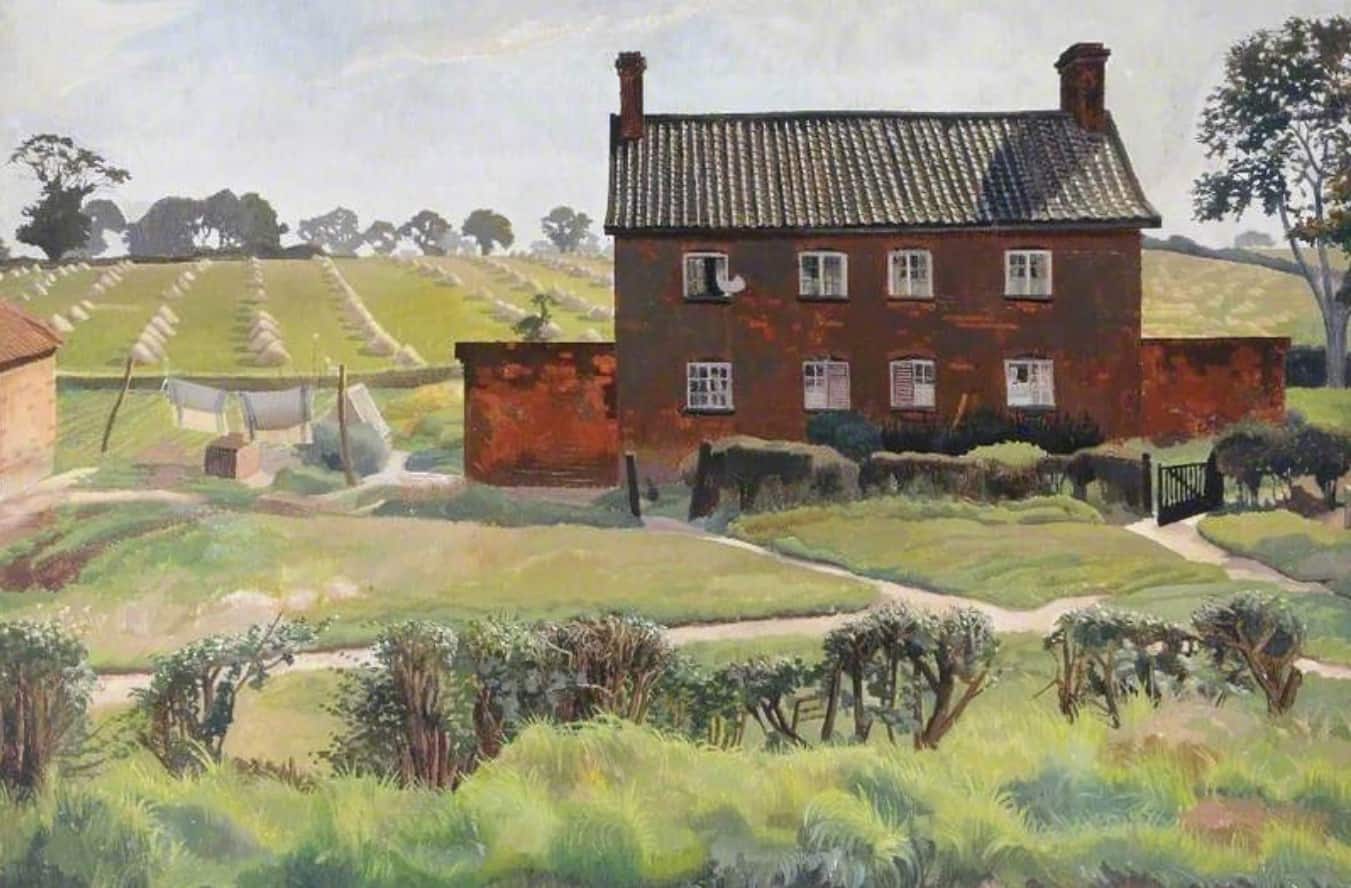
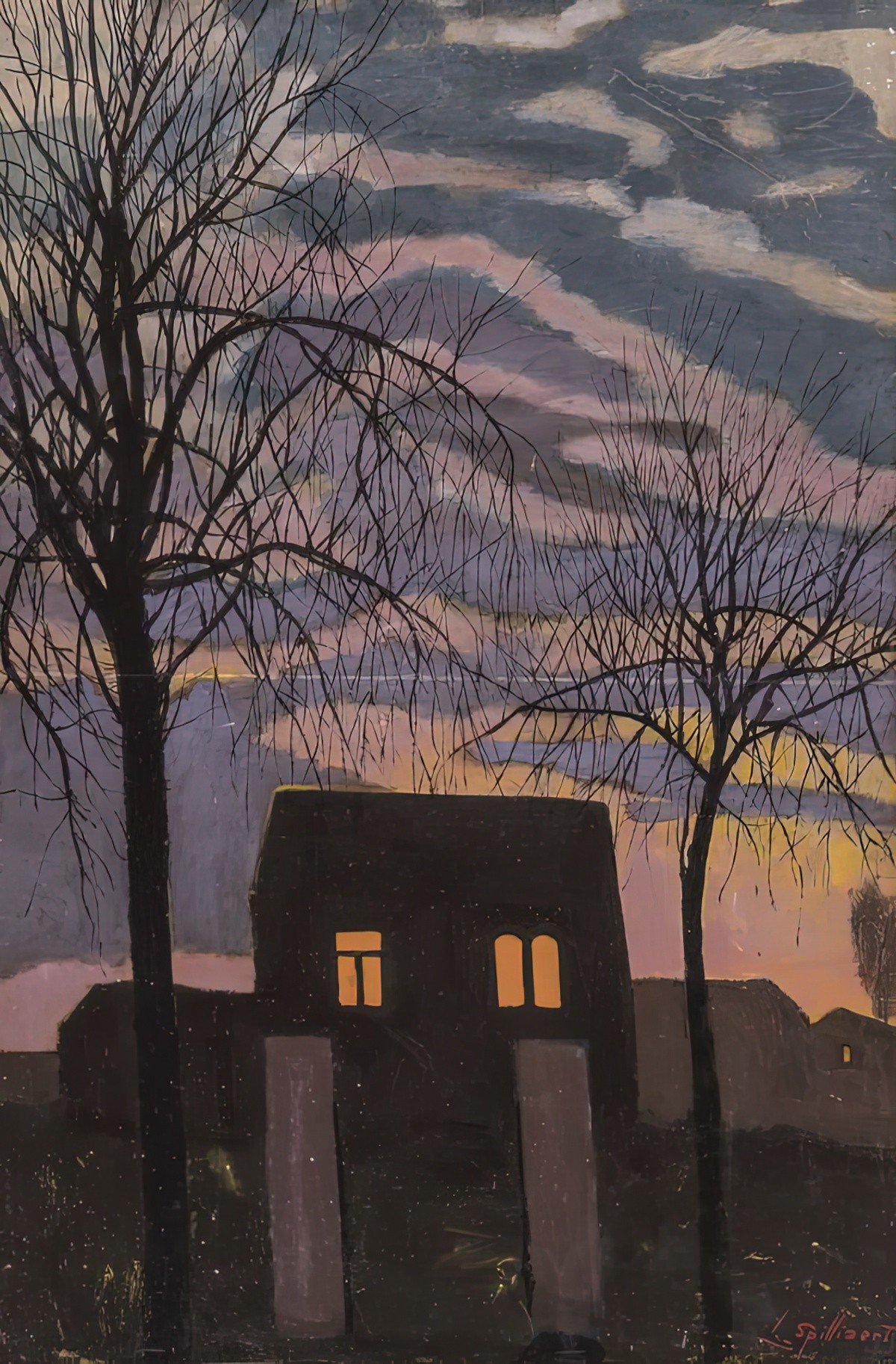
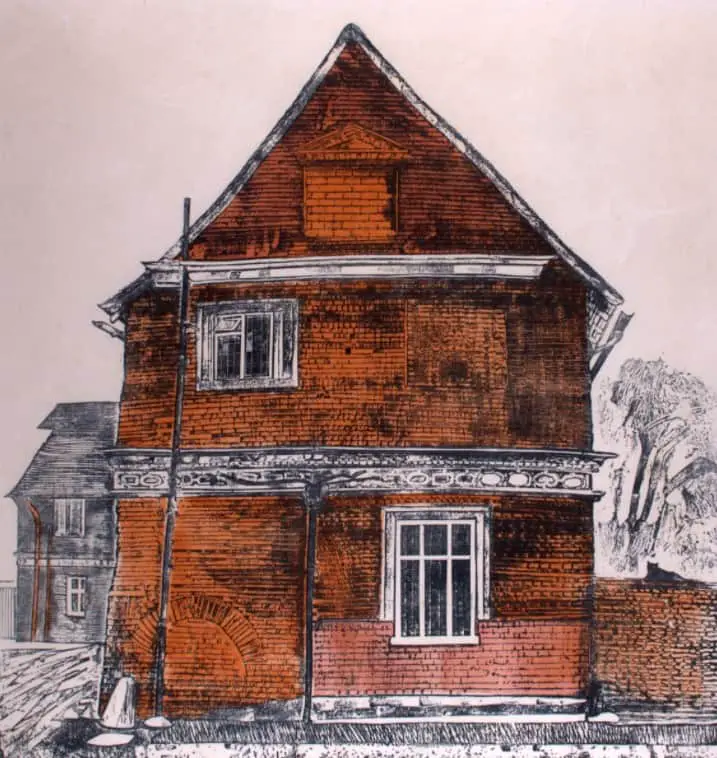
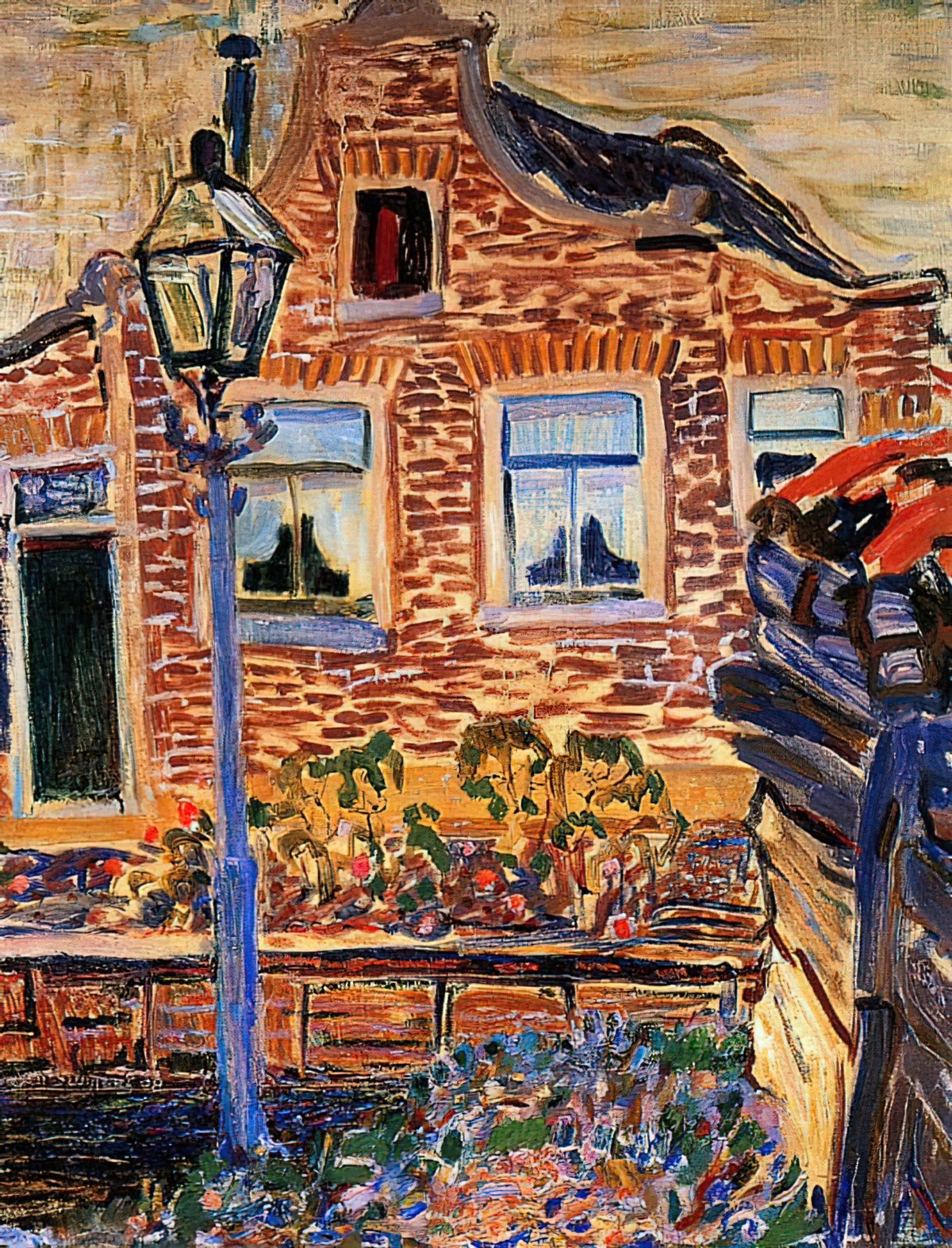
Two of these houses are almost one point perspective. There’s a cosy vibe to the painting, helped along by the blanket of snow and the yellow lights in the windows.
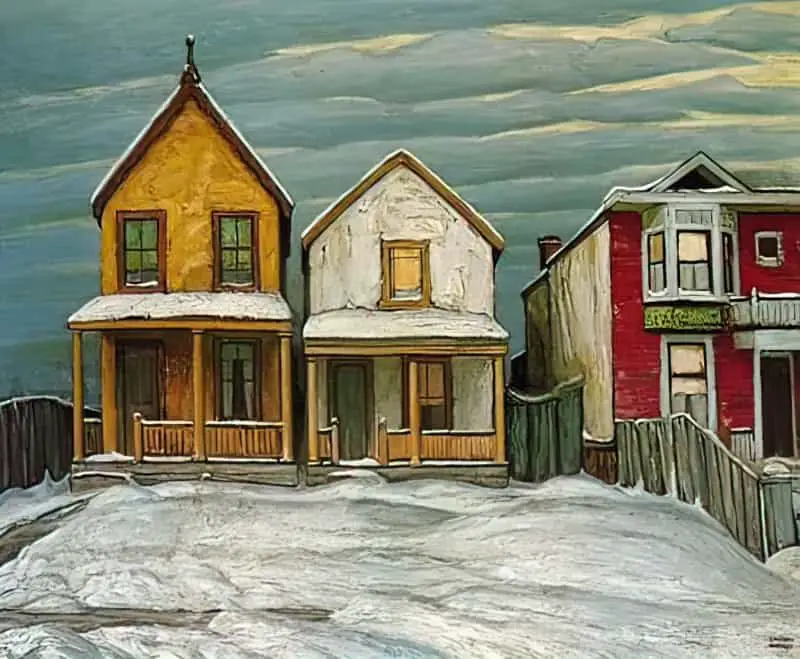
Likewise, this illustration for Peter Pan is fairly realistic due to the fact that everything is in 3D. It just so happens the invisible camera is right in front of the house.
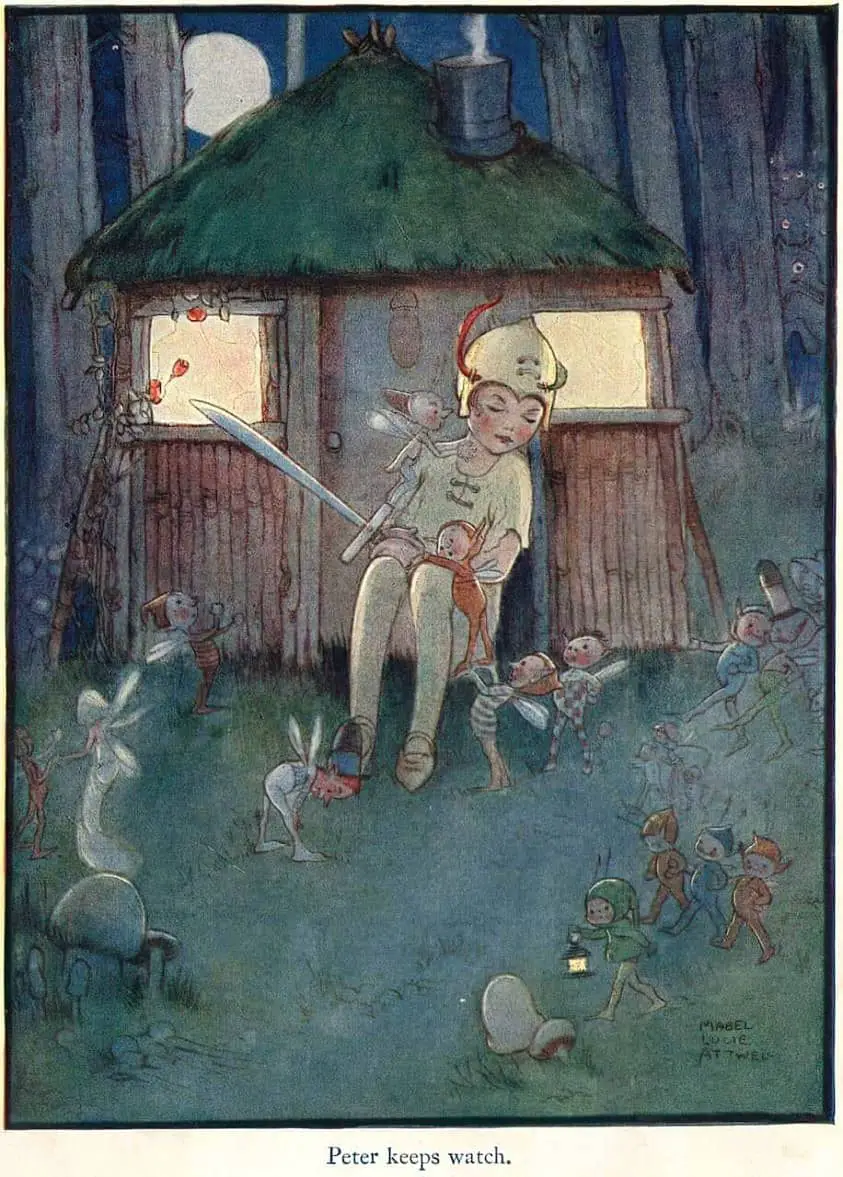
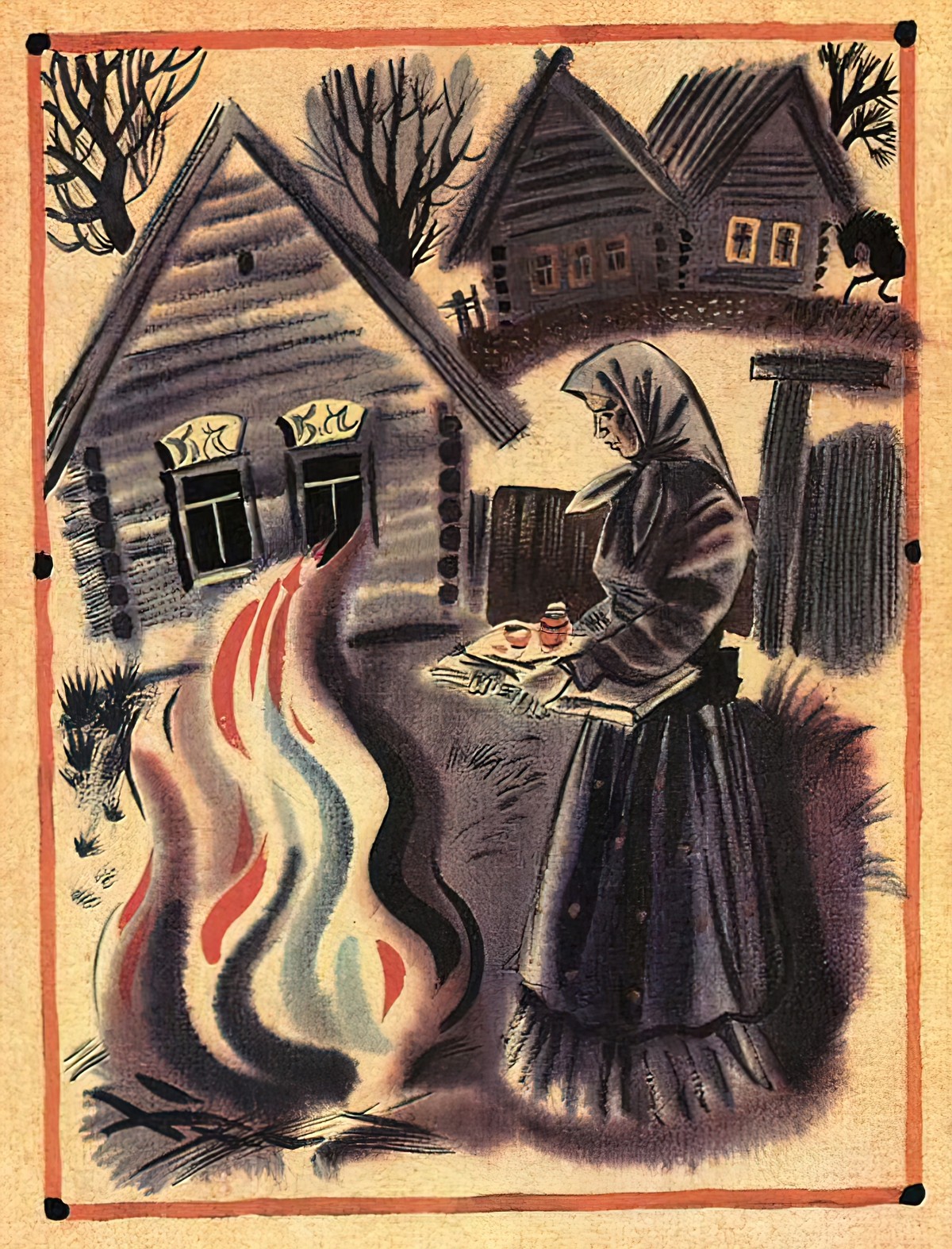
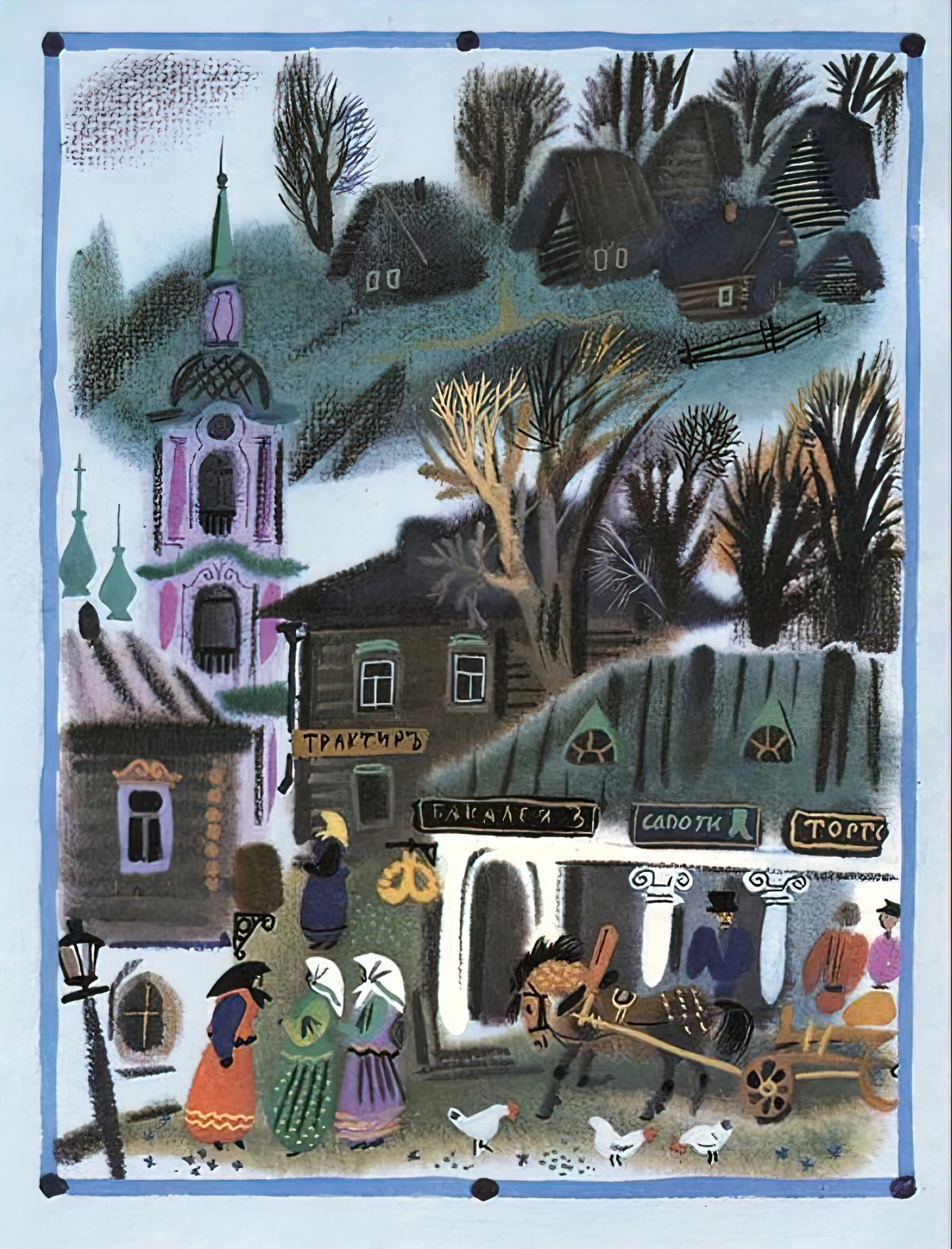
Then you have illustrations like this, which flatten everything. This style of art is especially well-suited to stories which present a narrative symbolically. Literally any arrangement is possible on the page. Illustrators of fairy tales frequently (but don’t always) make use of what we might call ‘kairos narrative art‘. (Don’t use that phrase, I made it up.) In this kind of illustration you can plonk anything anywhere, play with size and scale, embed decorative elements… You are completely and utterly free to make art which takes the viewer into a dreamscape.
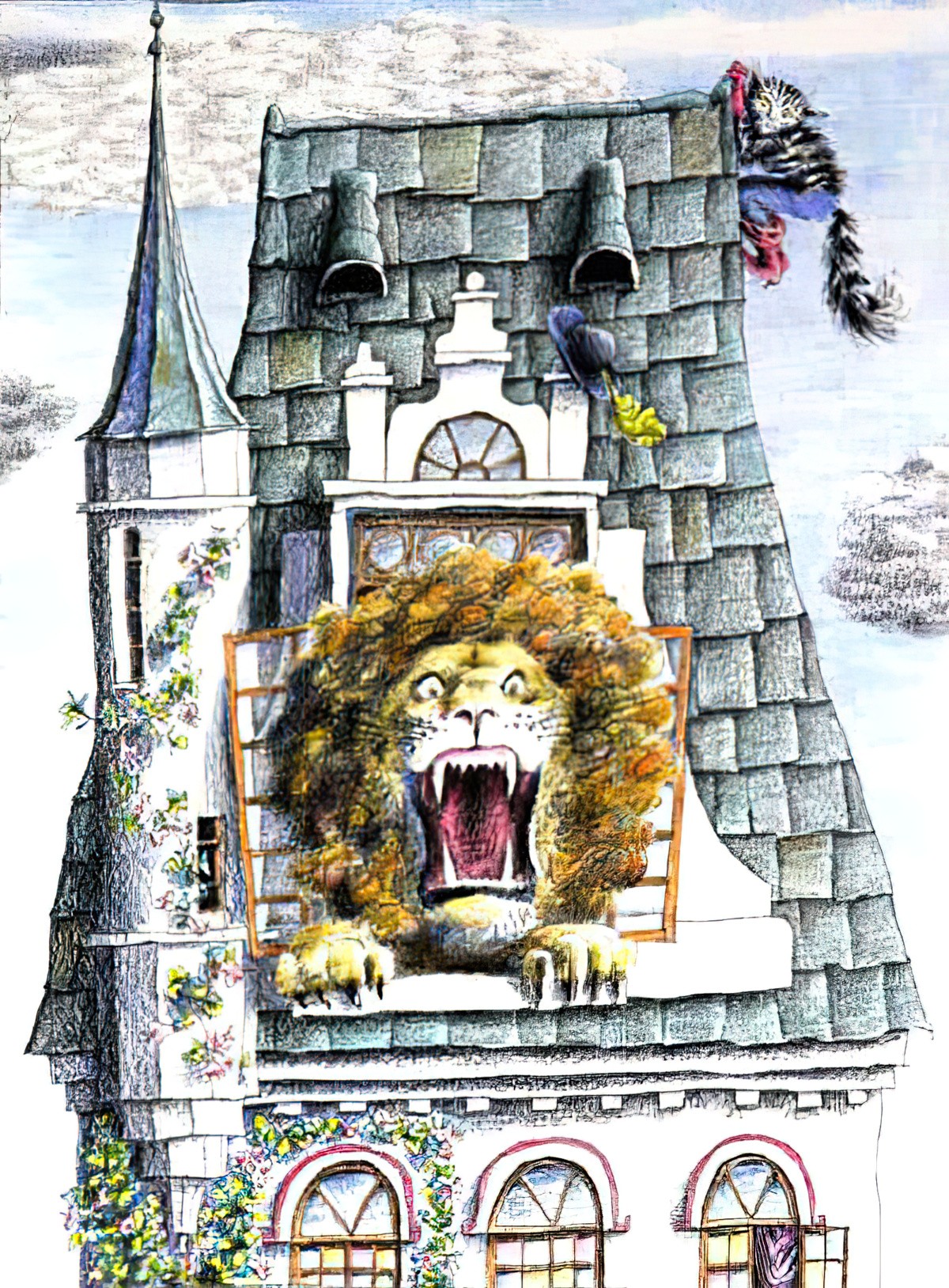
Notice how Janusz Stanny has plonked a childlike house in the middle of a sophisticated fine art illustration? This is a great example of playing with size.
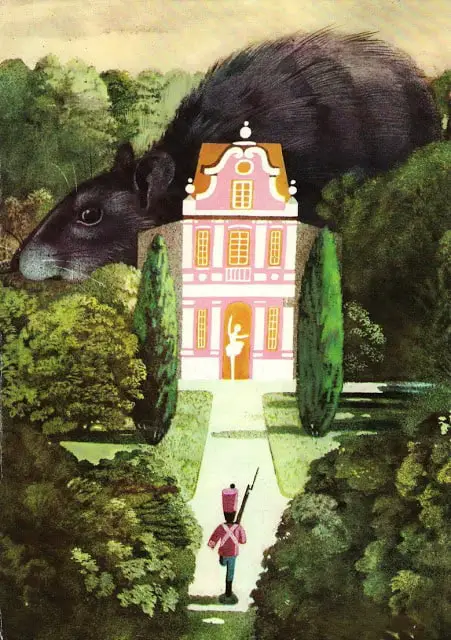
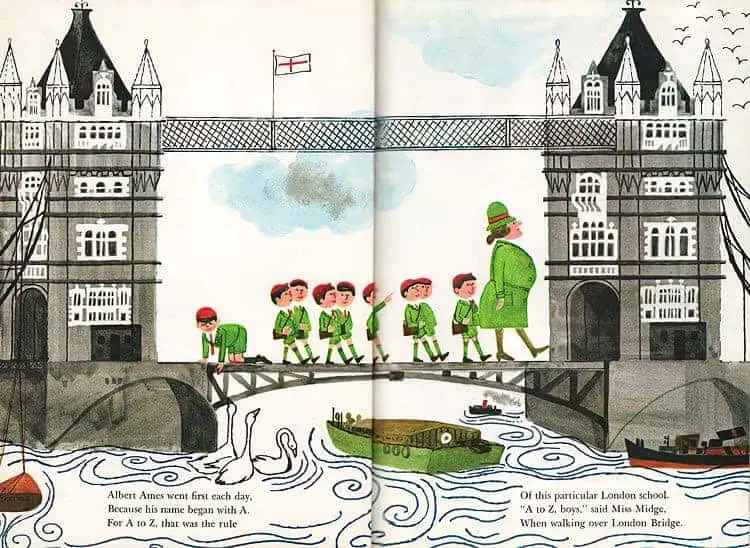
You can also fit a lot of story world into artwork which runs on kairos as its fourth dimension.
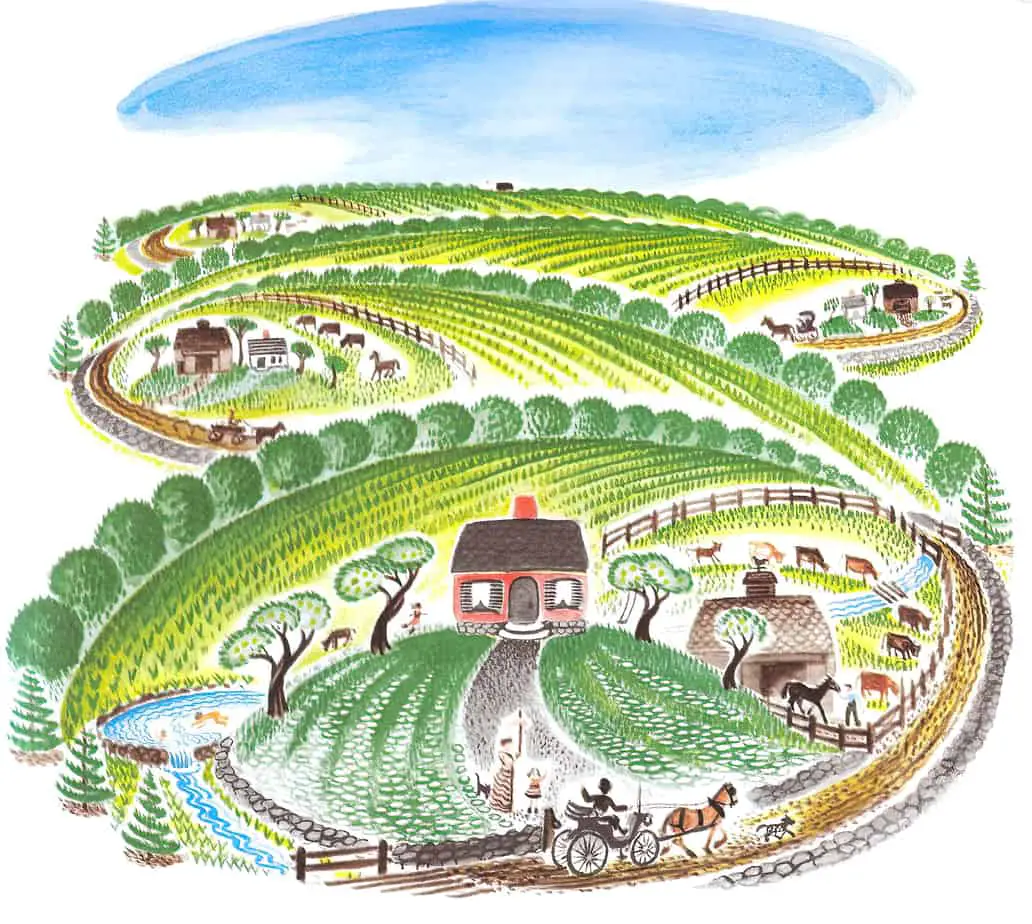
We can divide picture book perspective into two rough groups: Staged and cinematic. The staged compositions keep the viewer outside the action, as if they remain seated in an audience. There are generally plenty of long shots, and never any close ups. The one point perspective building clearly puts an illustration in the staged category. (But sometimes the illustrator zooms in as the story progresses, using the one point perspective house only as an introduction.)
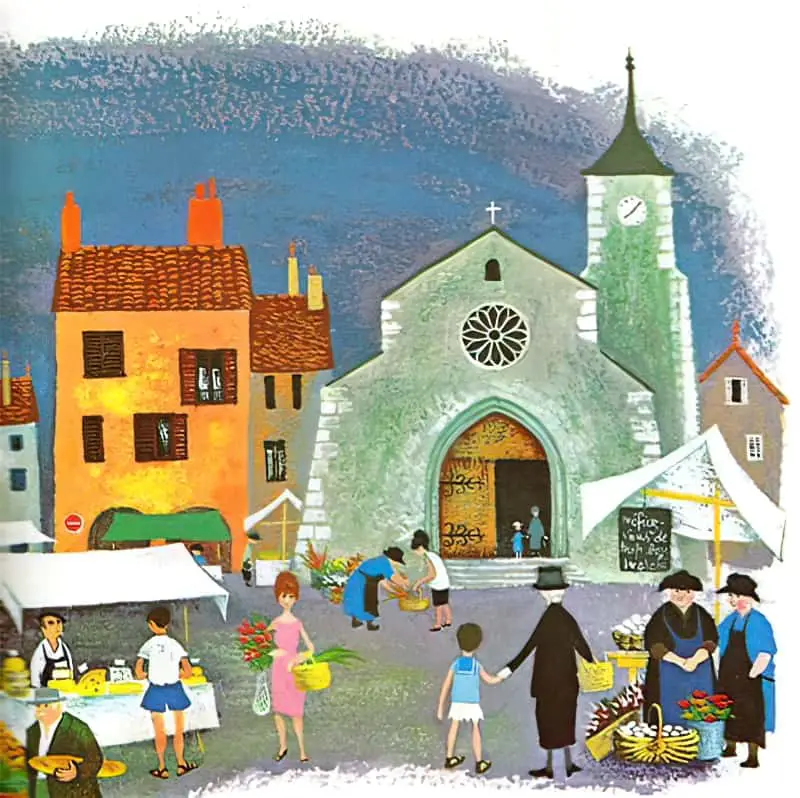
Houses are sometimes introduced directly, alongside the characters who live in the house. The following example is from a 1953 early reader.
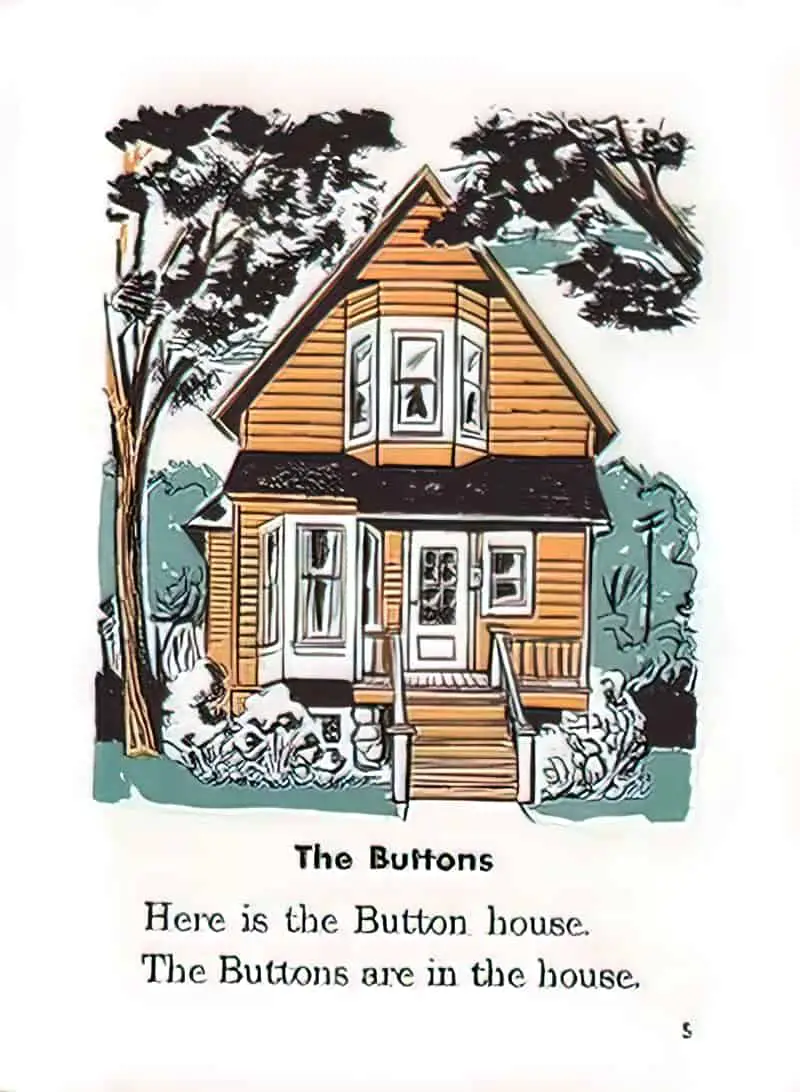
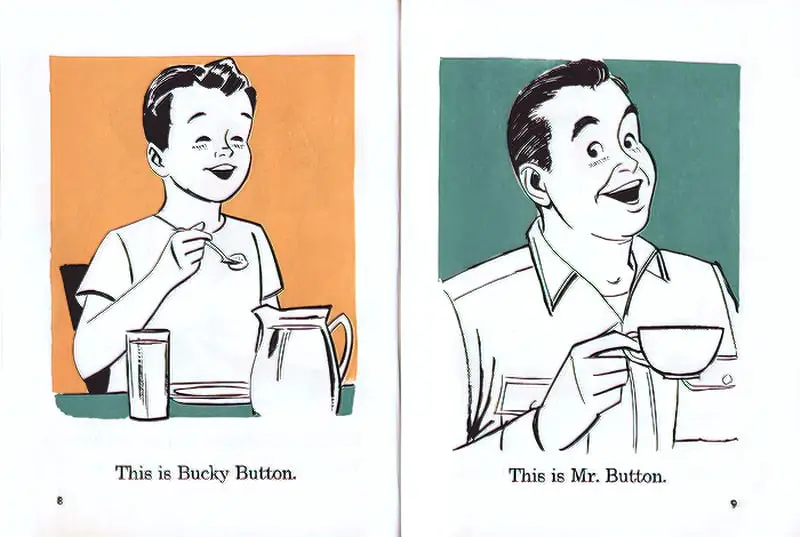
American illustrator Barbara Cooney created beautiful illustrations with a folk art feel, a look which is very much in fashion again, though not so much in children’s books — as pieces people hang on their wall. (For some examples scroll down to the bottom of my post on Miss Rumphius.)
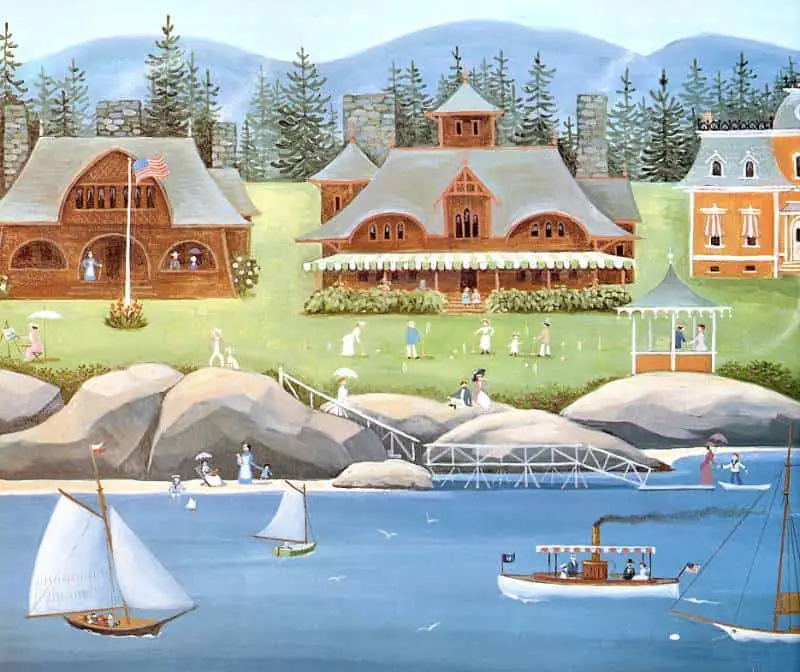
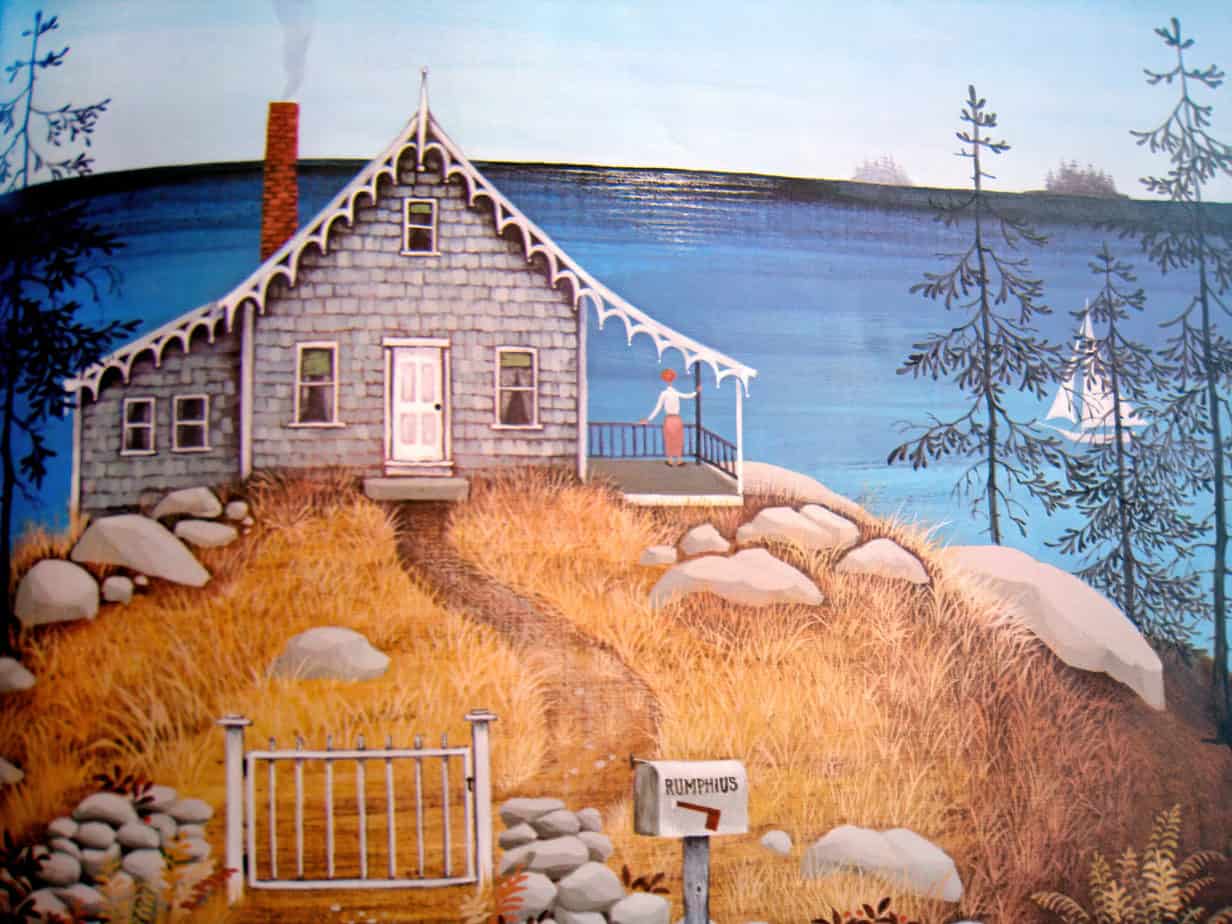

Another thing this perspective achieves: It makes a house look accessible. You can walk right inside and make yourself at home.

